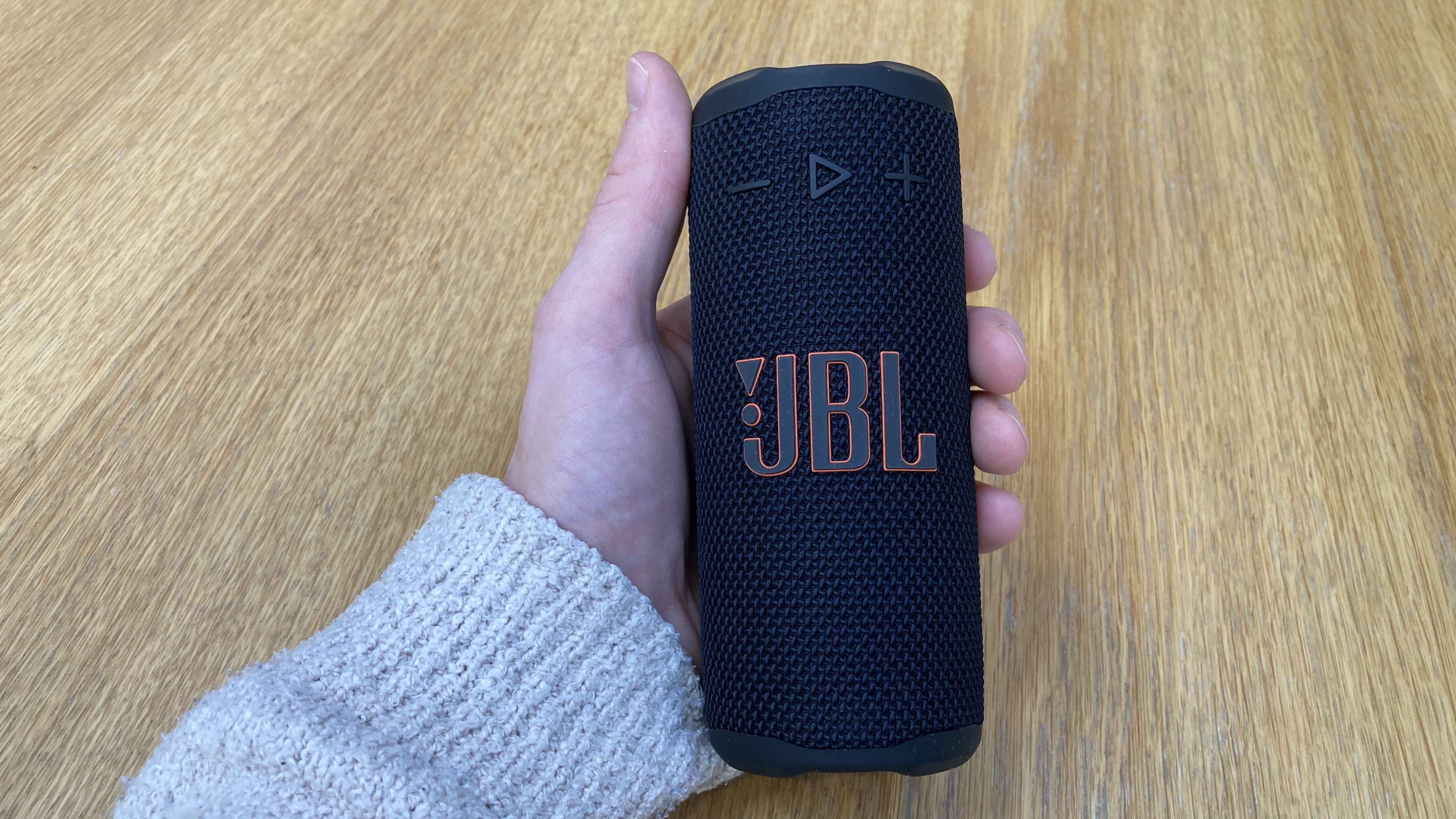Best Dolby Atmos soundbars 2025: our reviewers' five recommendations
Atmos soundbars that take immersive TV audio to the next level
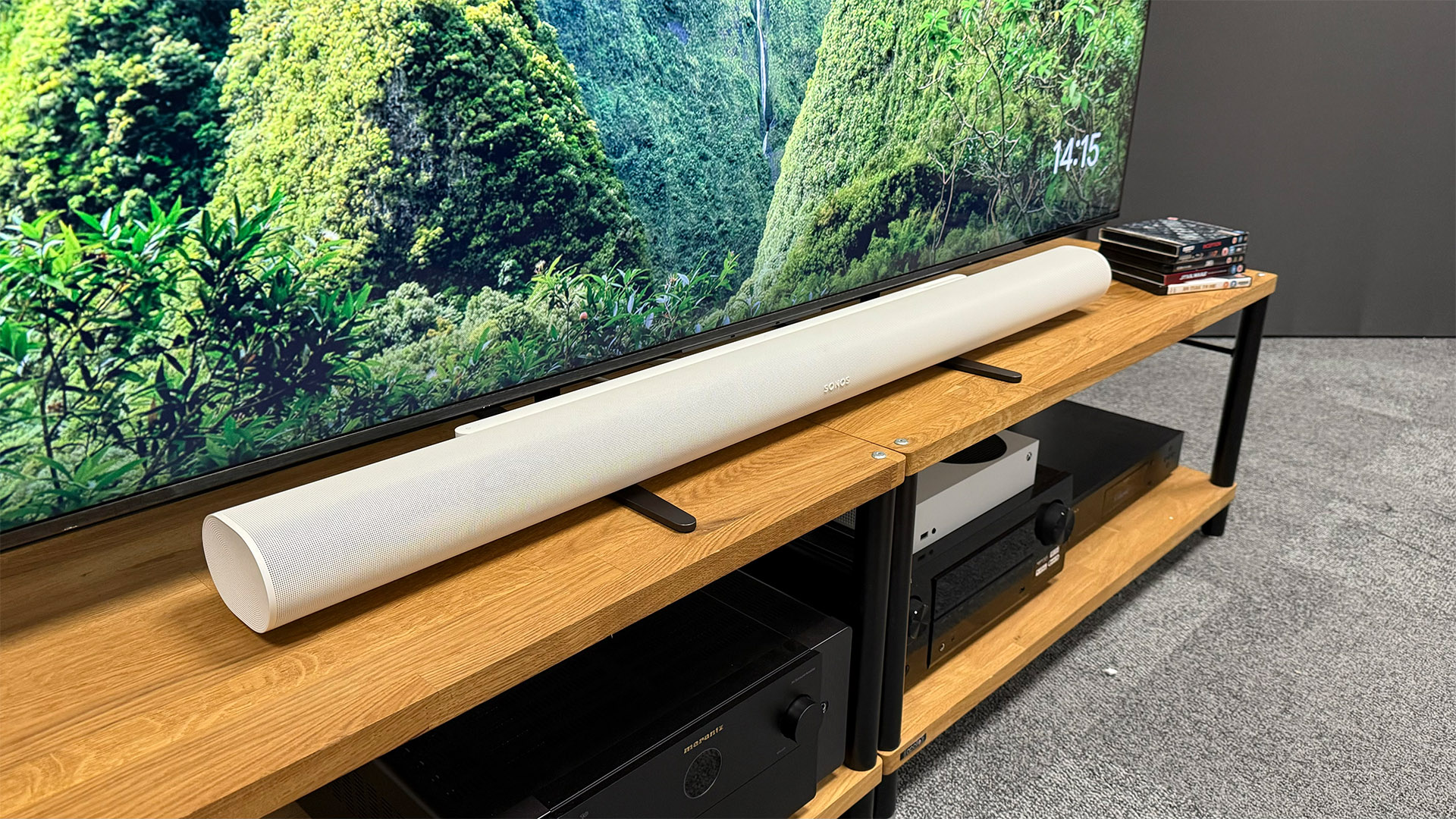
On the hunt for a way to improve your TV's sub-par audio? Then investing in a Dolby Atmos soundbar is a great option, especially if you don't have the space or budget for a full-fat multi-speaker system.
Soundbars offer an immediate upgrade without having to cost the earth, as well as taking up minimal space in your set-up.
Sure, it's incredibly rare to find a soundbar than can compare with the full Atmos effect of a multi-speaker package. But there are plenty that come close, and you can find some of them in the guide below!
We have decades of collective experience in reviewing soundbars, and we have gathered the best of the bunch right here. When we test a model in our dedicated test rooms, we compare it directly with the best in that category – so you can trust our advice.
We explain more about how we test Dolby Atmos soundbars at the bottom of this page. And if you want even more options, check out our choices for the best soundbars. Without further ado, let's take a look at our top picks.

I’m What Hi-Fi?’s TV and AV Editor, and I’ve been testing TVs and home cinema products (as well as hi-fi kit and headphones) for over 16 years. It’s always been obvious to me that great home cinema is 50 per cent picture and 50 per cent sound, which is why I’m so frustrated by the poor quality of TV audio. That’s the reason I’m so passionate about Dolby Atmos soundbars. There’s no simpler and neater way to get immersive cinema sound at home – as long as you choose the right model.
Best overall
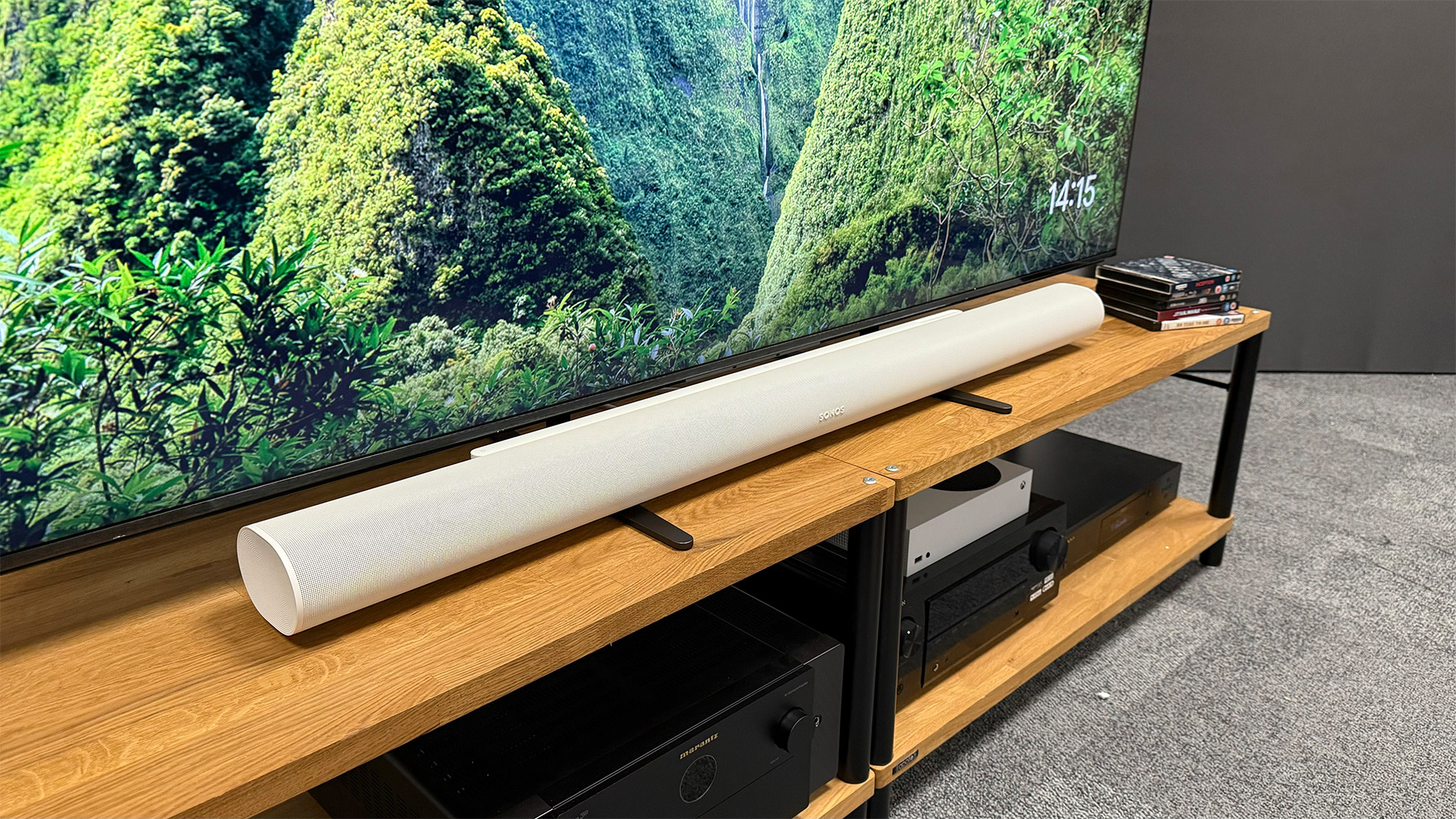

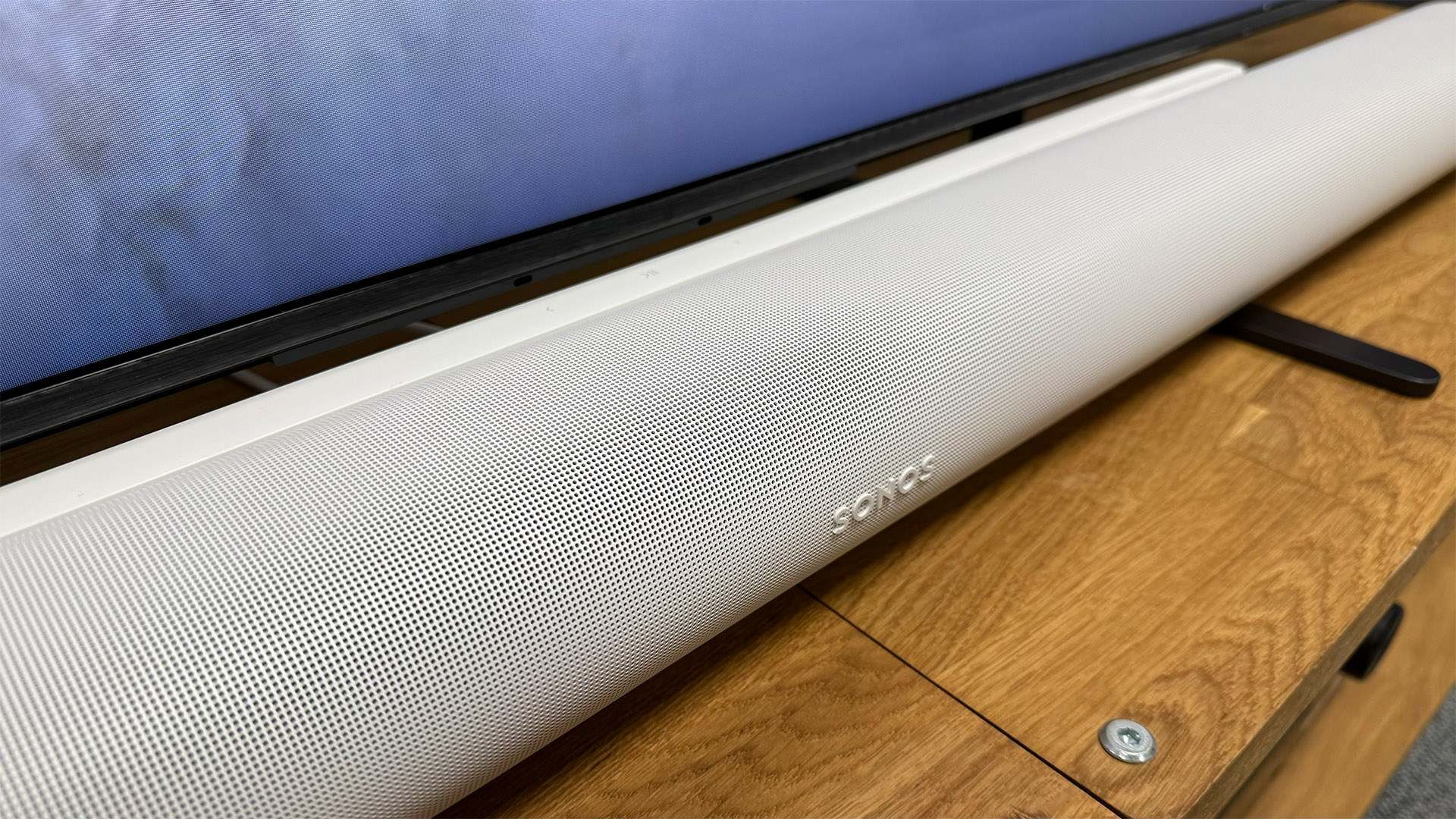
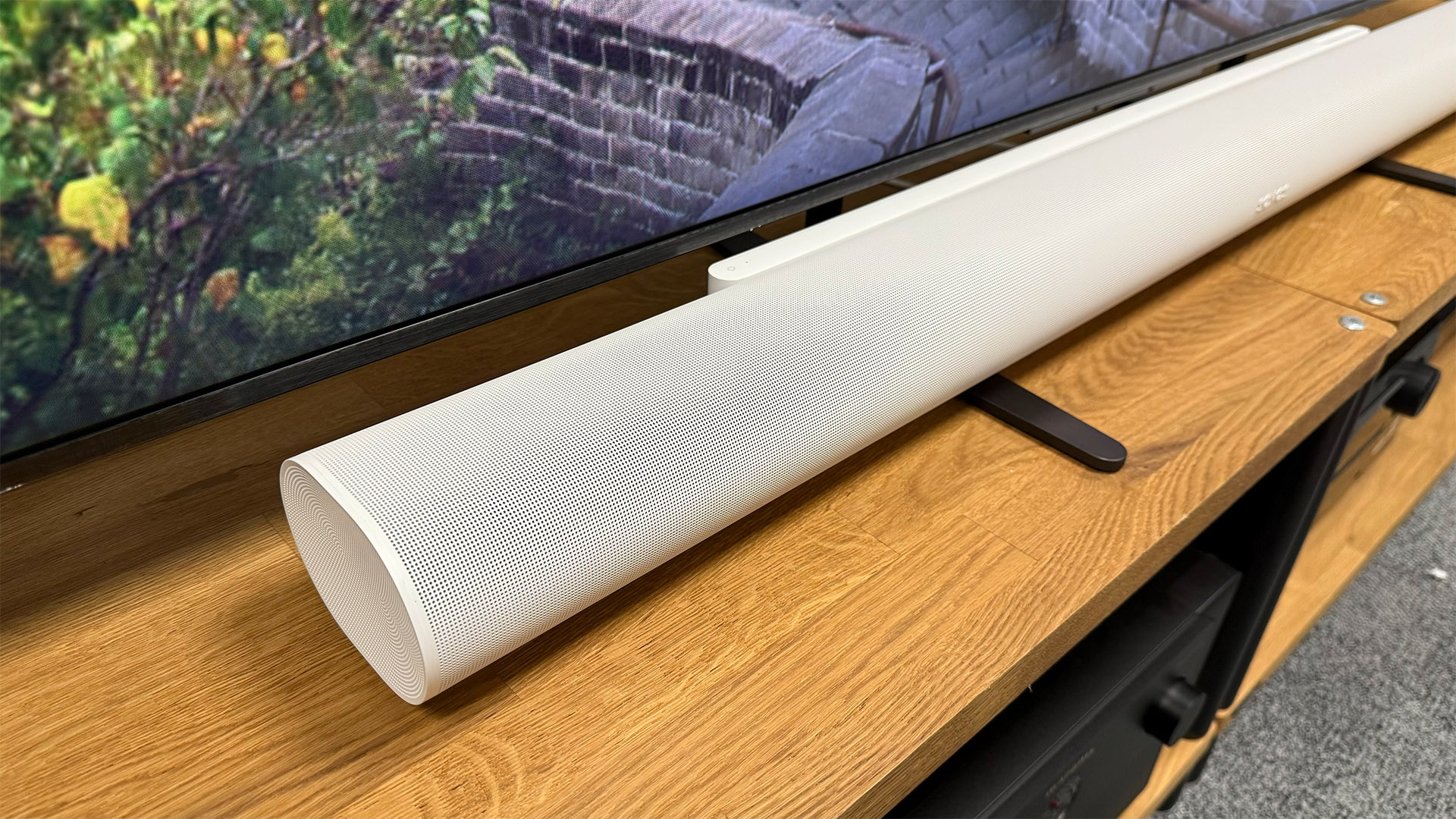
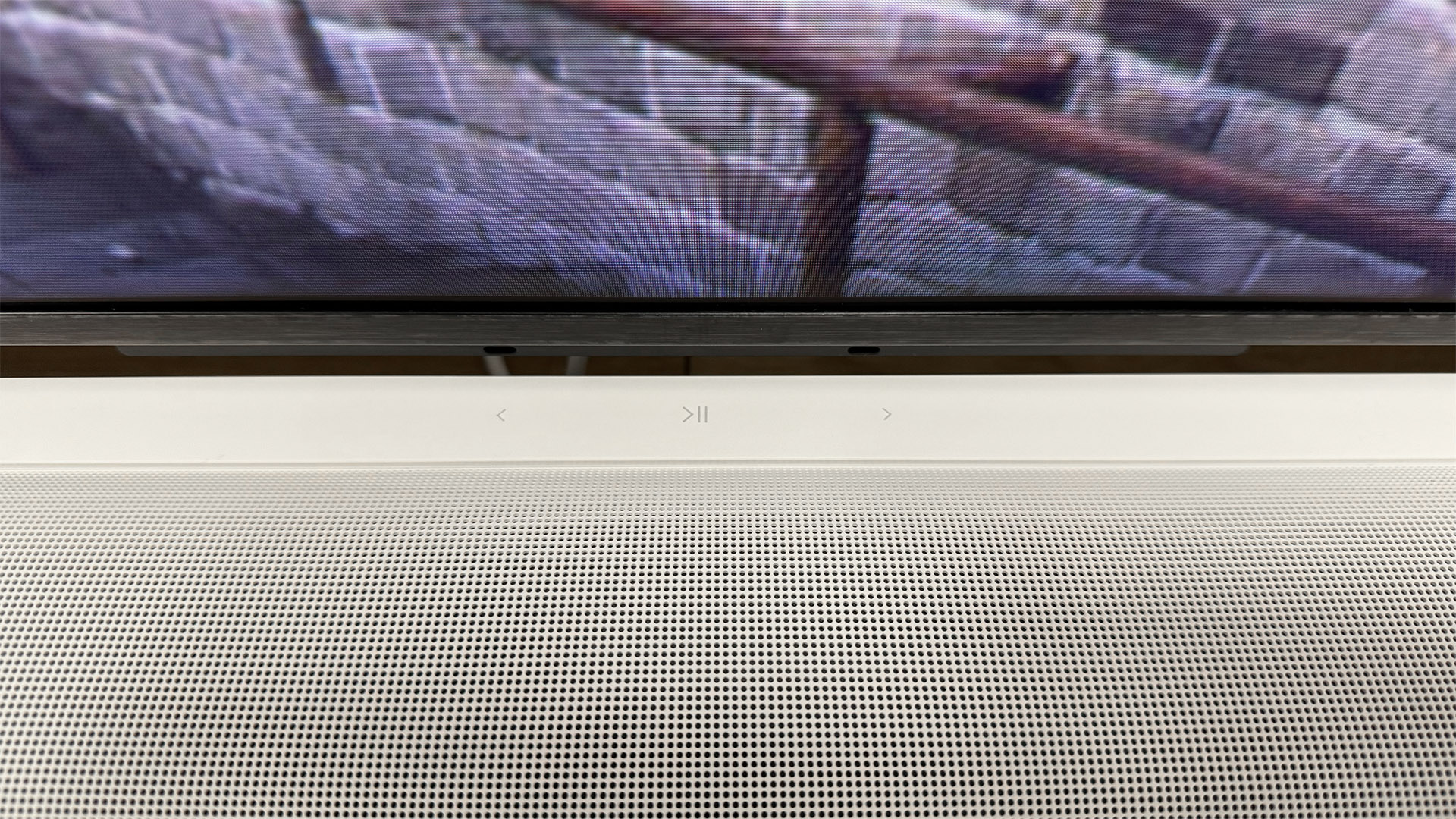
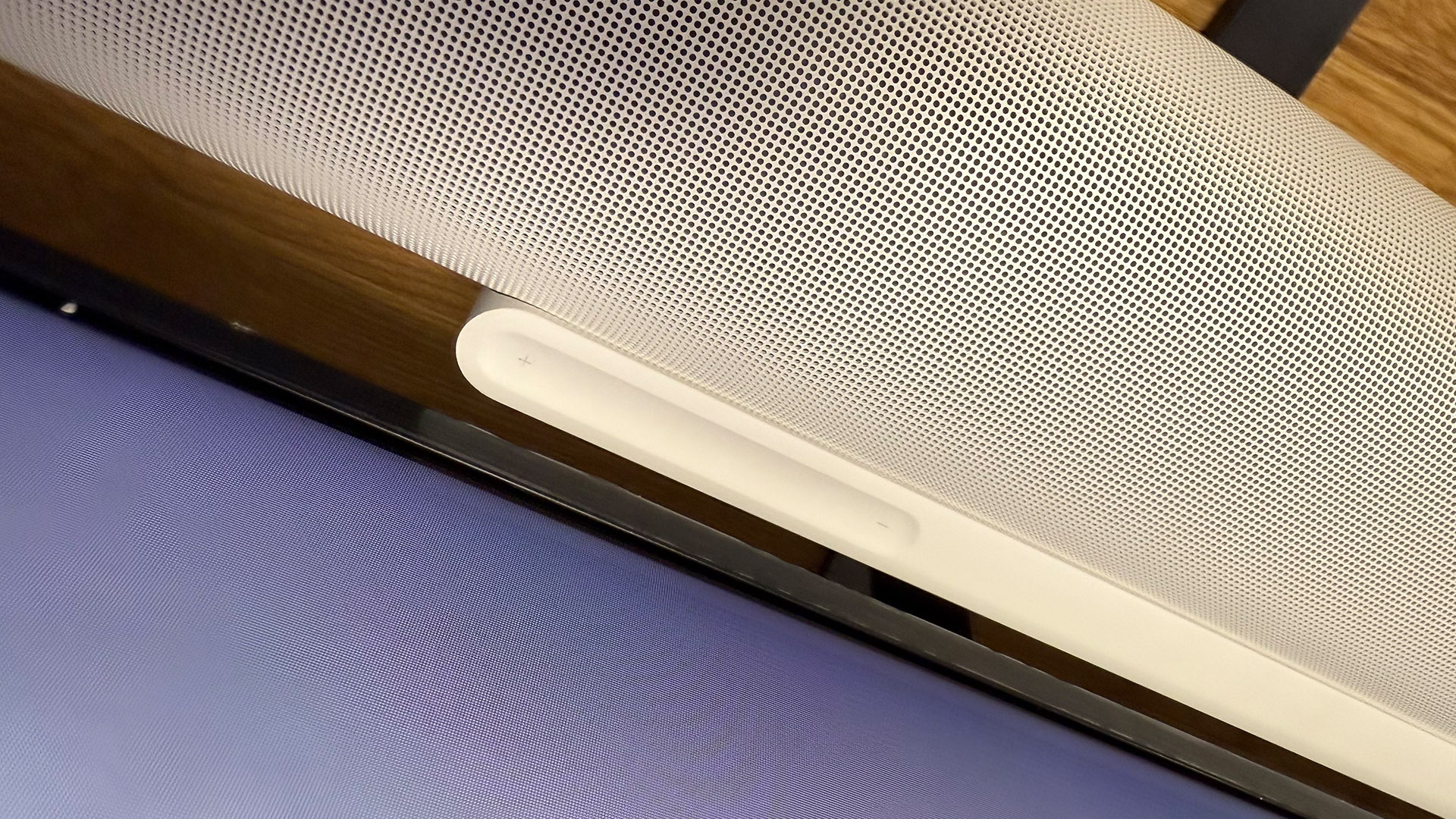
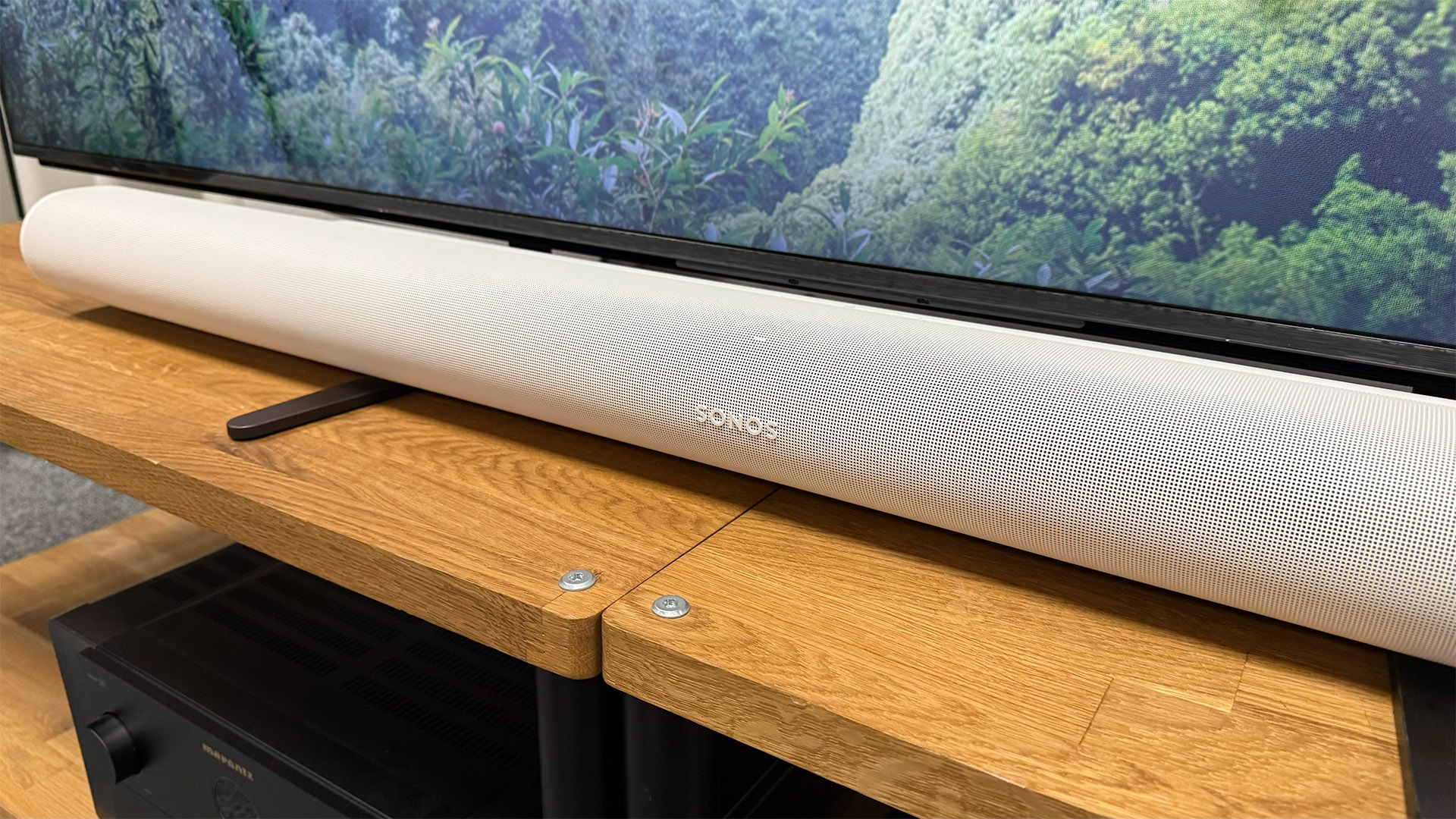
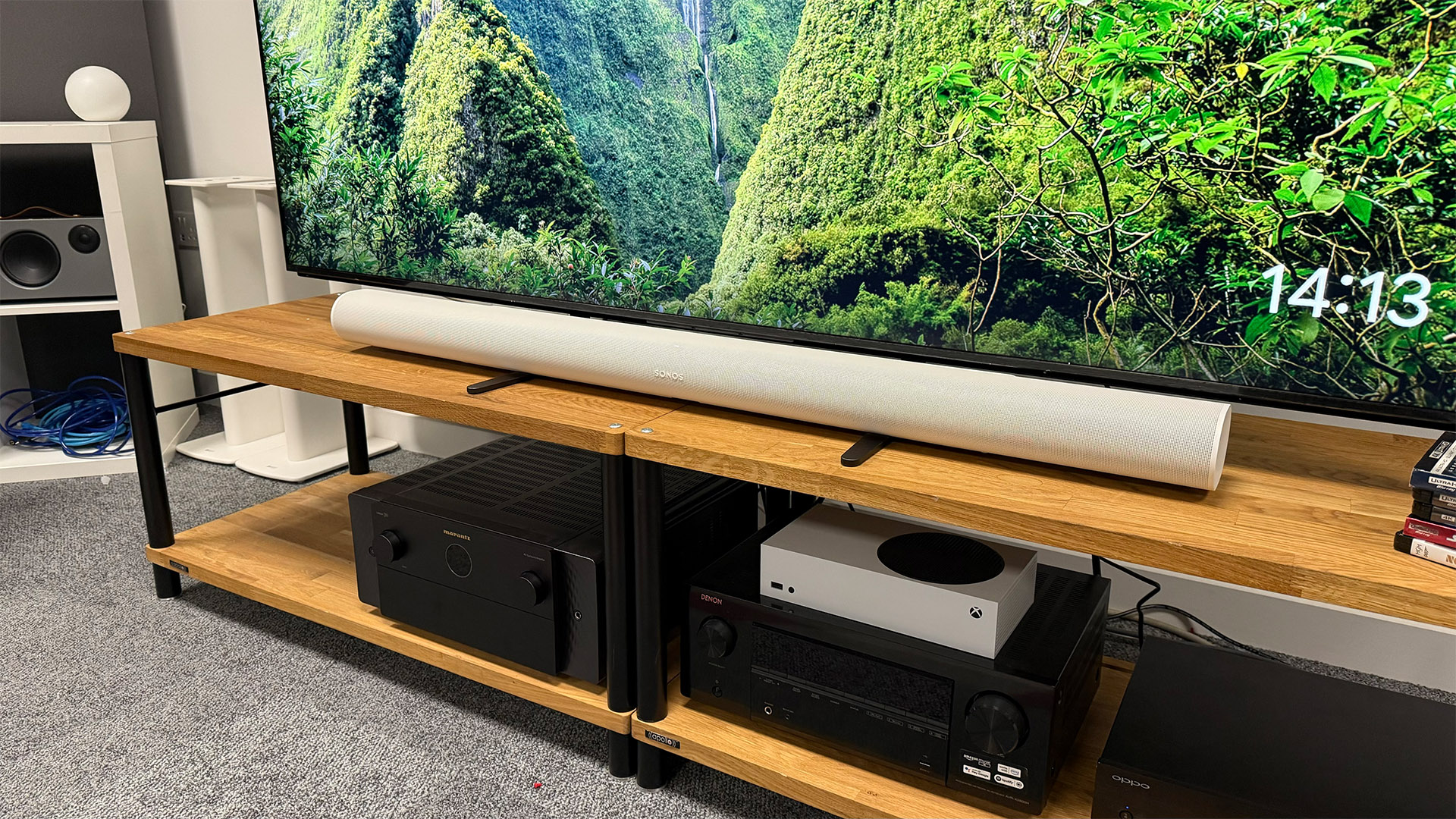

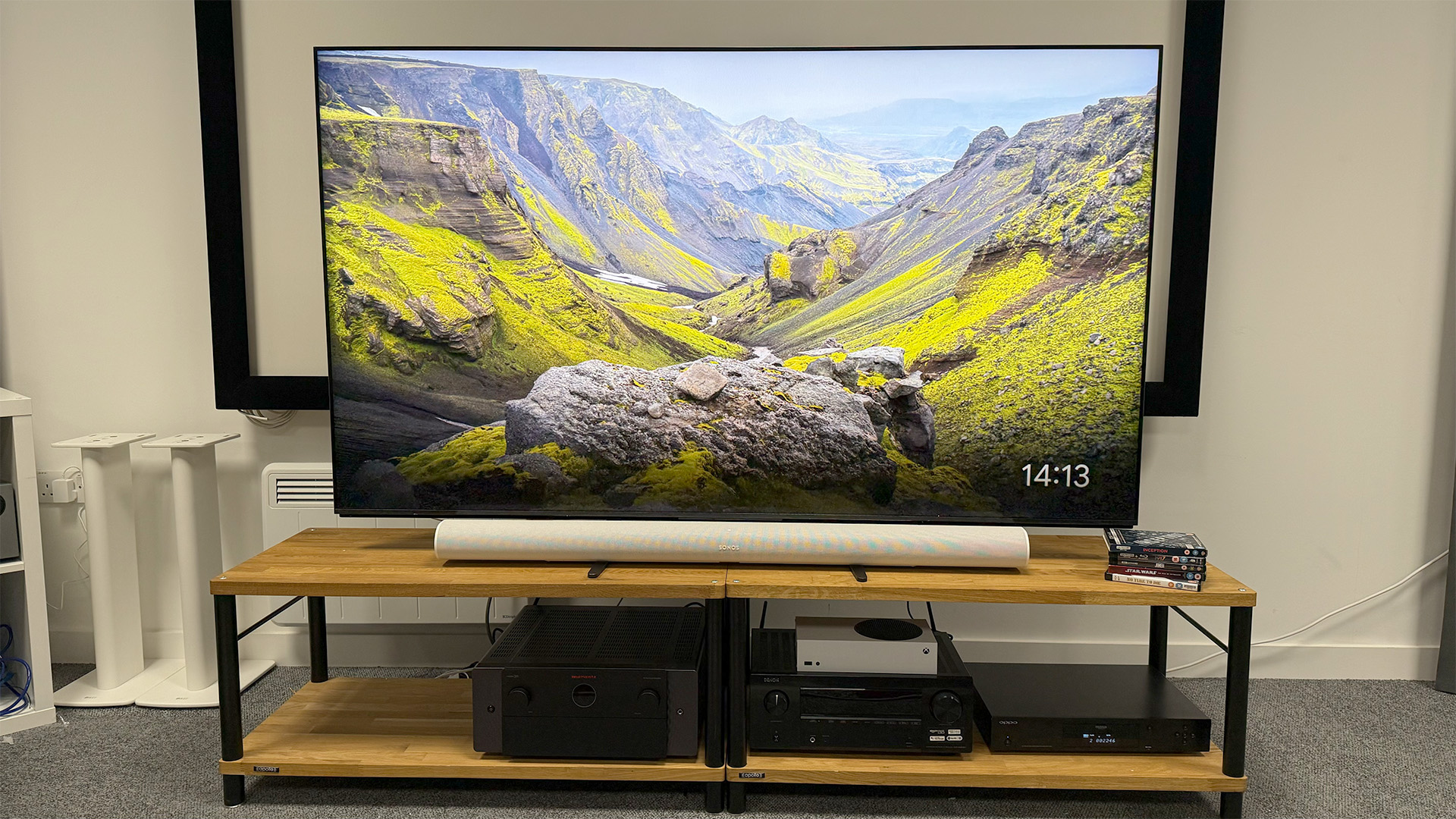
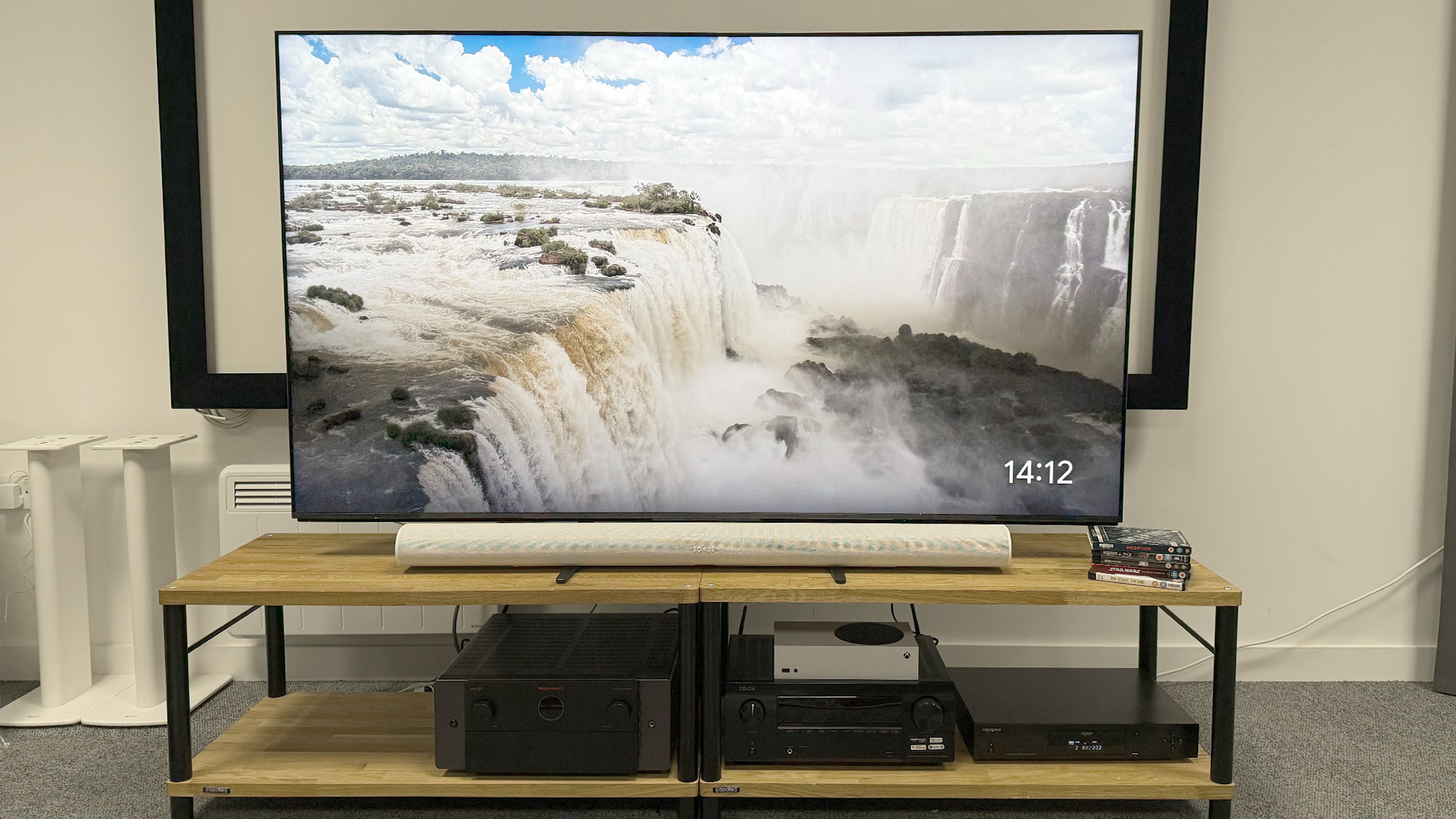
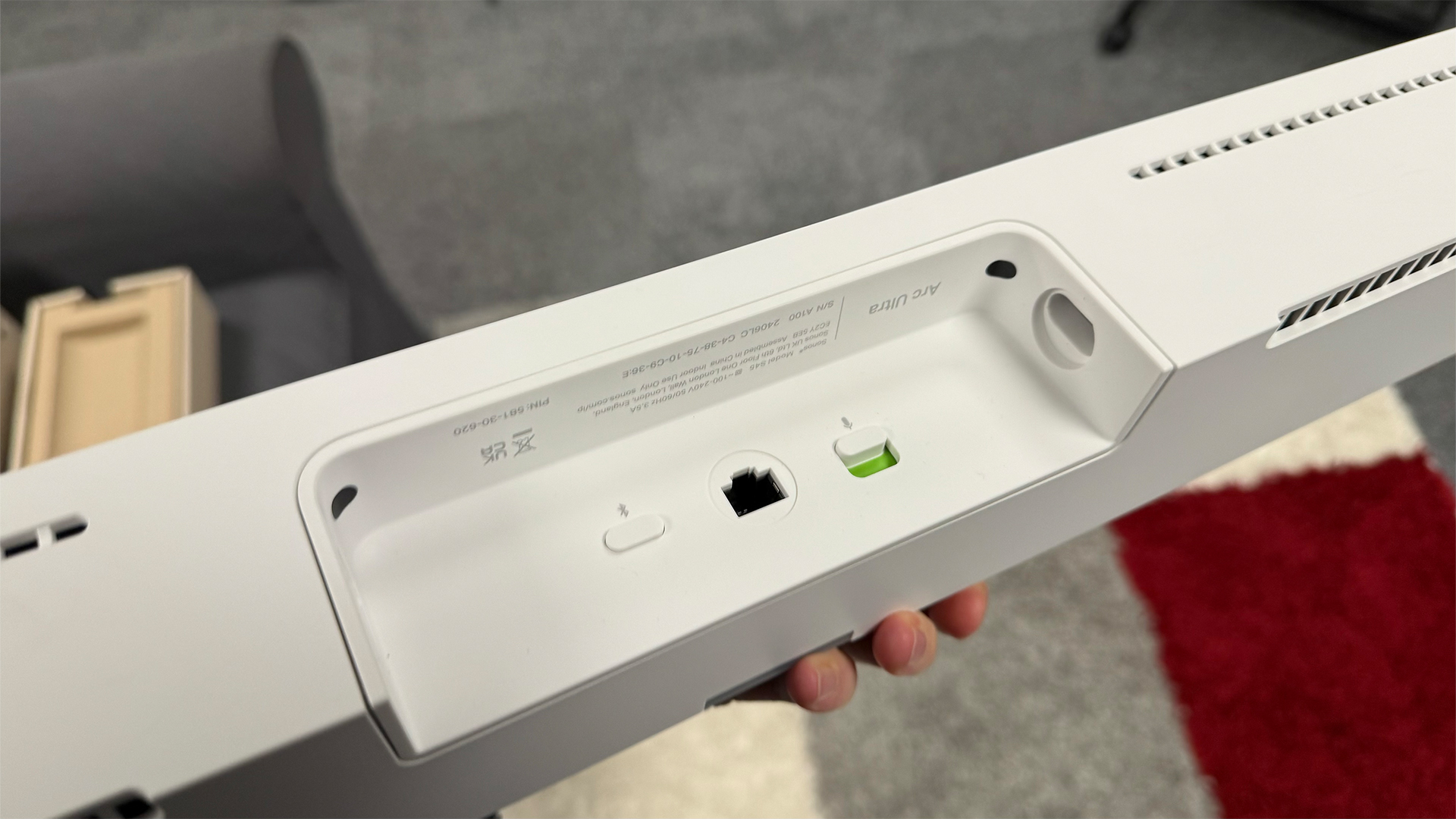
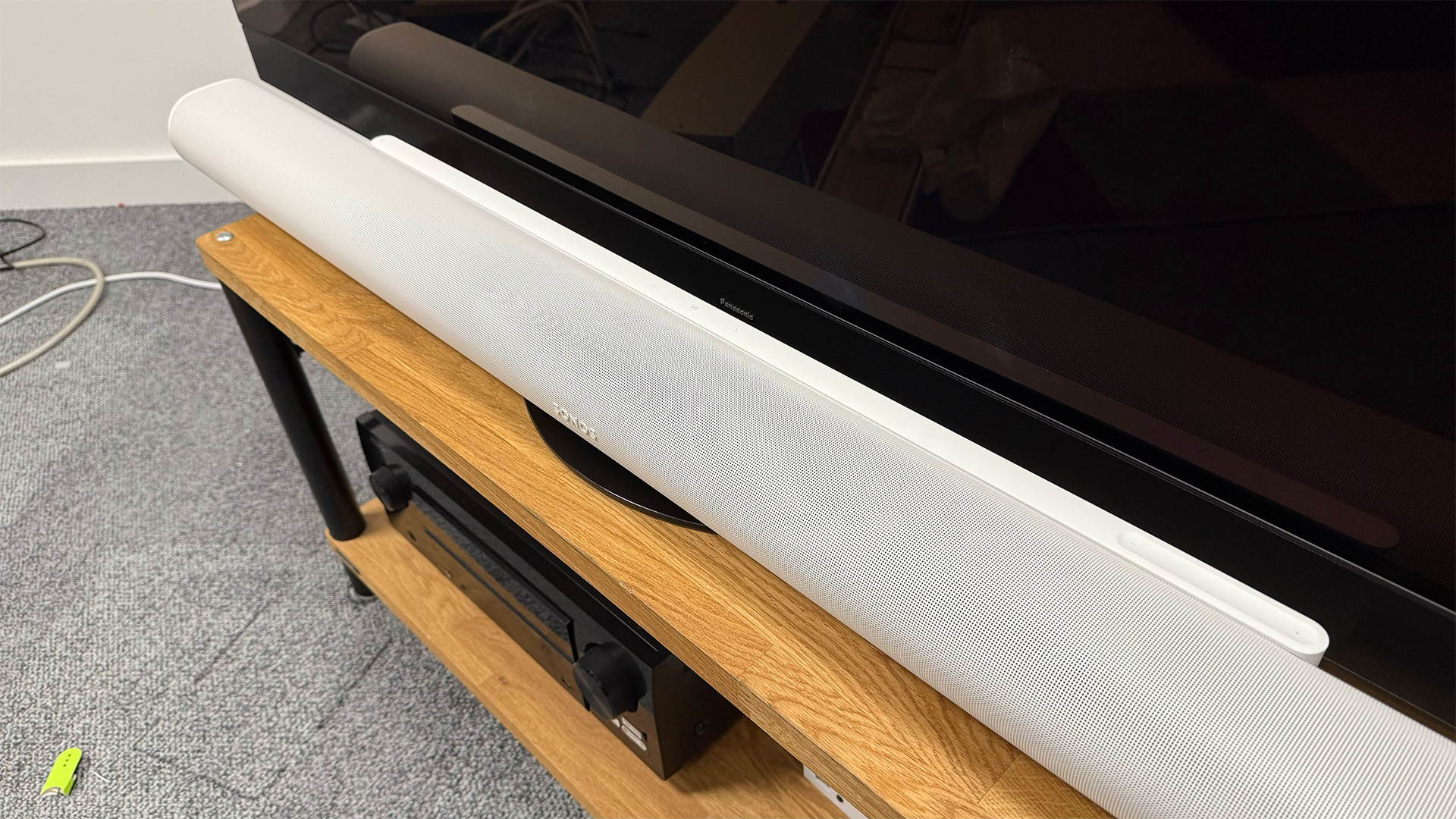
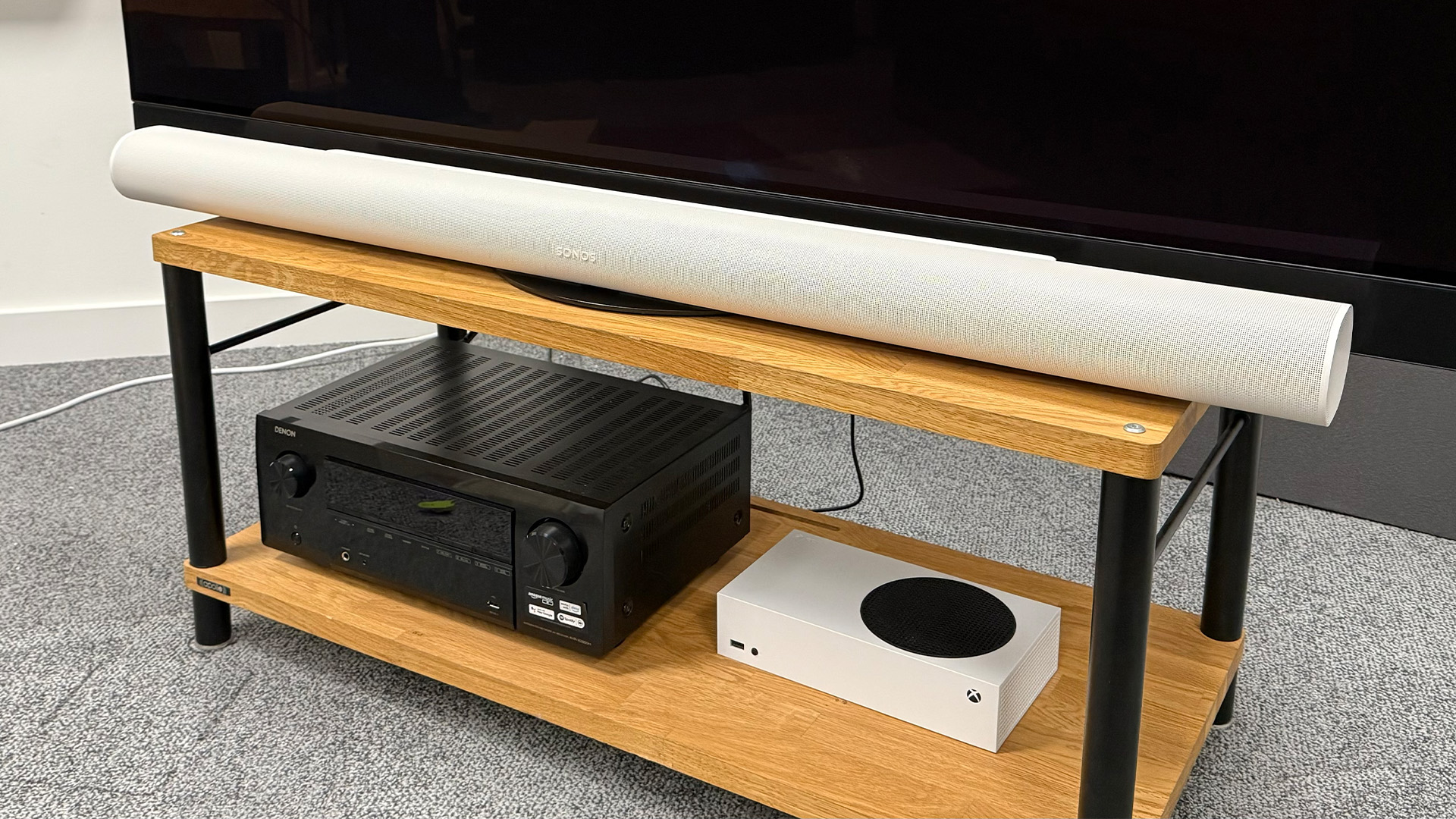
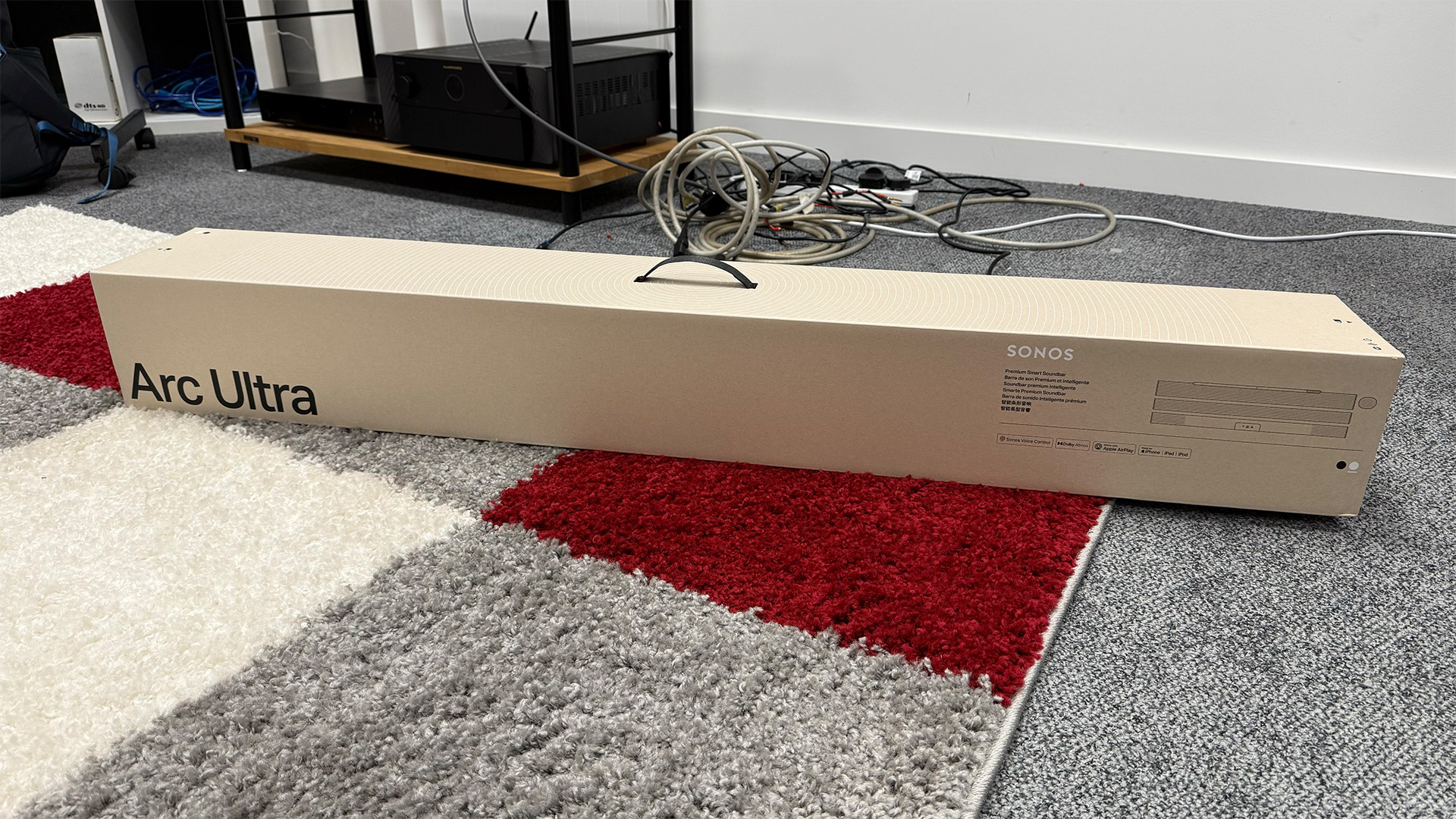
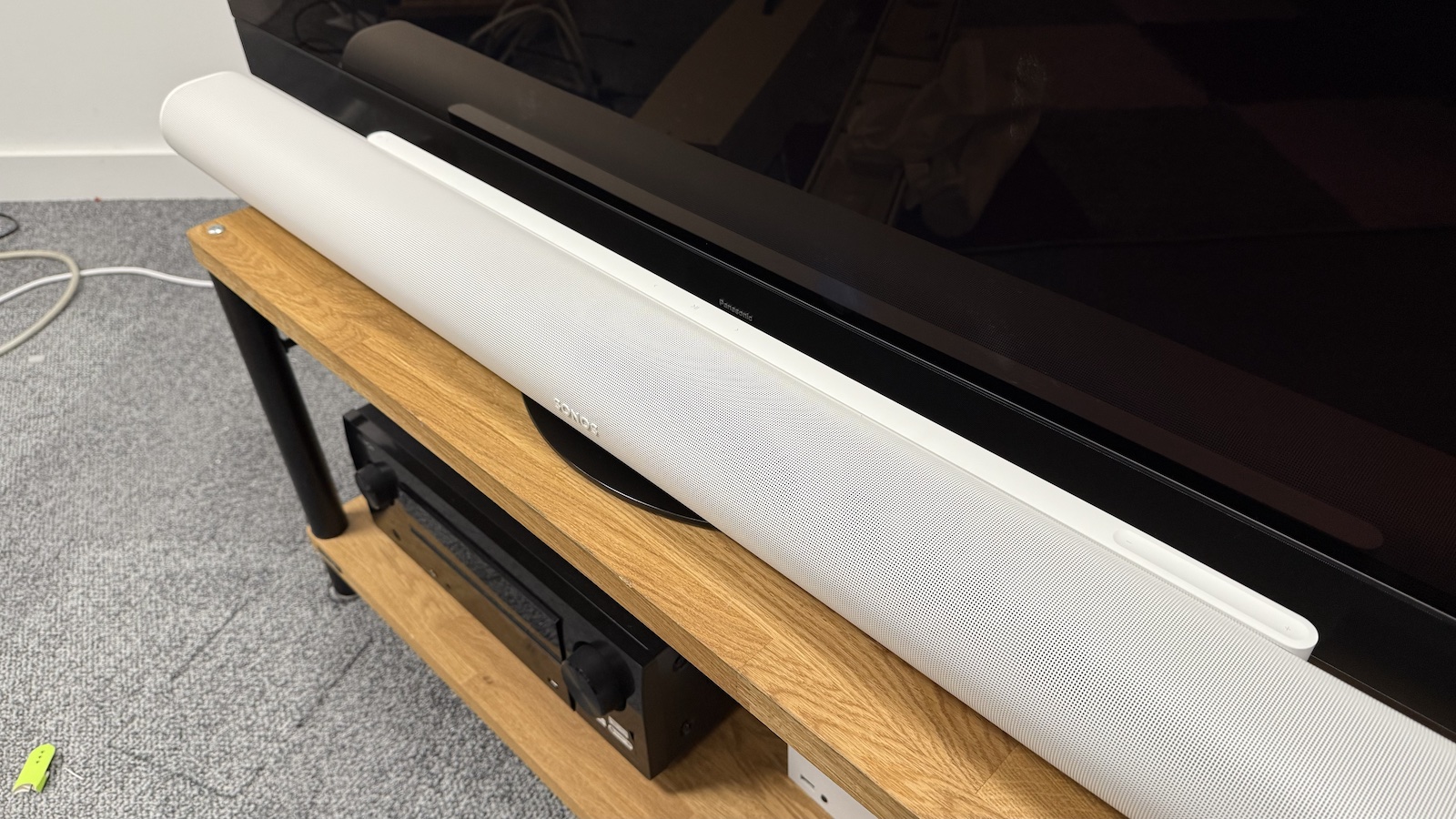
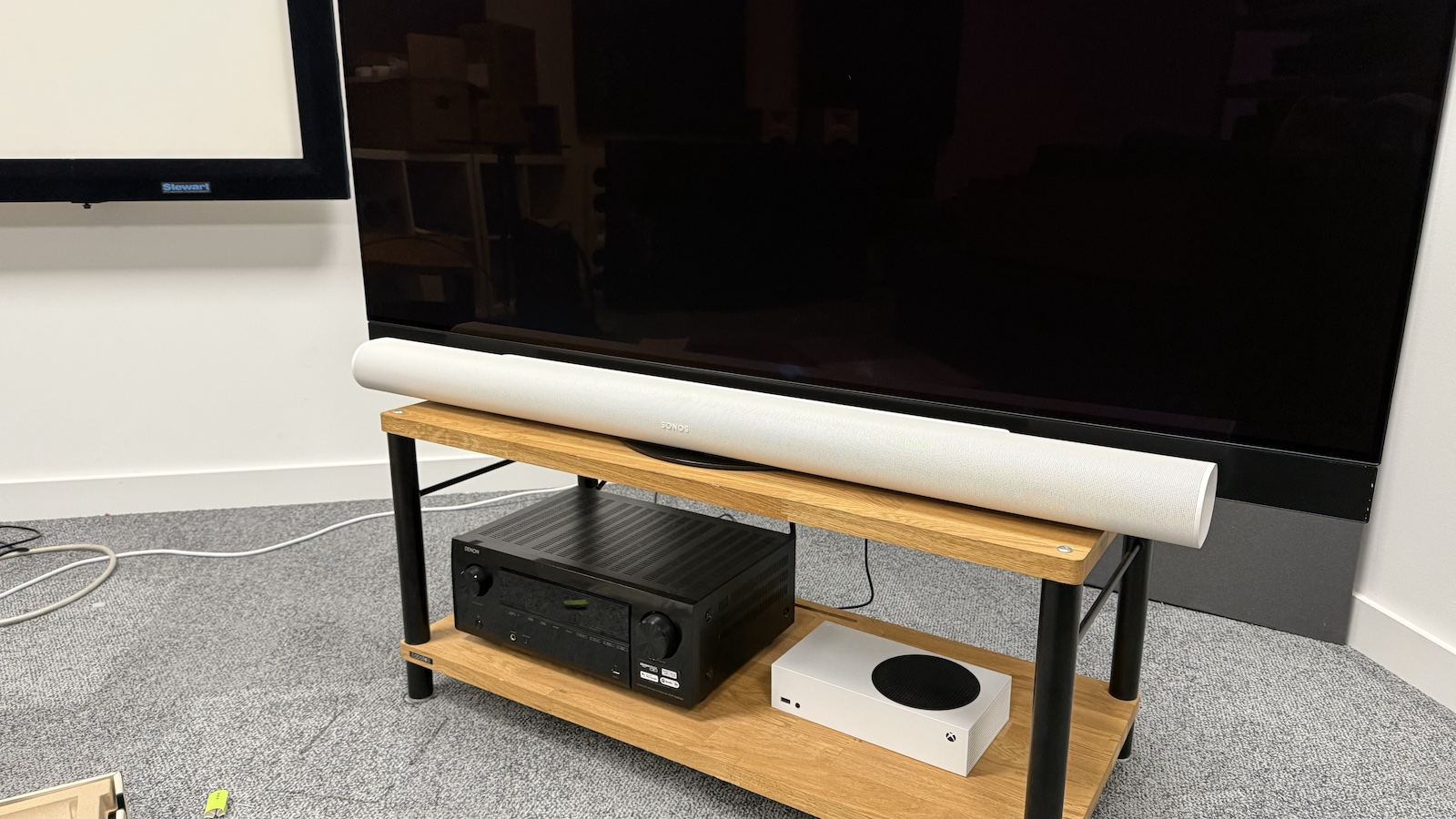
Specifications
Reasons to buy
Reasons to avoid
The Sonos Arc Ultra is the flagship Dolby Atmos soundbar from the iconic audio brand. Based on our thorough comparative testing it is also the best overall option for most people.
At a technical level it is an impressive piece of hardware, featuring a 9.1.4-channel configuration that’s powered by 15 Class D amplifiers. That’s a radical jump in drivers from the 5.0.2 arrangement seen on the original Sonos Arc.
The specific arrangement combines seven tweeters, six midrange woofers, and a custom 'Sound Motion' woofer. The latter is particularly interesting as it works to improve low end performance using a custom motor design to let the driver move more air around.
This is why Sonos claims the Arc Ultra can produce twice as much bass as its predecessor and a generally more balanced sound – two claims that after running the two head-to-head in our listening rooms we can confirm are true.
During our tests the Arc Ultra delivered a clean, precise, spacious and three-dimensional sound with deep, tuneful and expressive low end.
Whether it was the booming synths during the second scene of BladeRunner 2049, rapid conversations in Oppenheimer, or jets screaming overhead in Top Gun: Maverick the results were excellent, even compared to top-end rivals, including the Sony Bravia Theatre Bar 9.
Hence our perfect five star rating and conclusion:
“It’s been a long time in the making but the Arc Ultra was worth the wait – this is a huge upgrade on the still-very-good original Arc.”
Add to this its upgradability, which lets you create a system by adding option Era 100/Era 300 speakers and a Sonos sub to the mix and it becomes an easy recommendation and the top slot in this buying guide.
Read our full Sonos Arc Ultra review
Attributes | Notes | Rating |
|---|---|---|
Sound | Excellent Atmos performance and superb clarity | ★★★★★ |
Features | App has issues, no DTS | ★★★☆☆ |
Build | Robust, and nice looking | ★★★★★ |
Best small
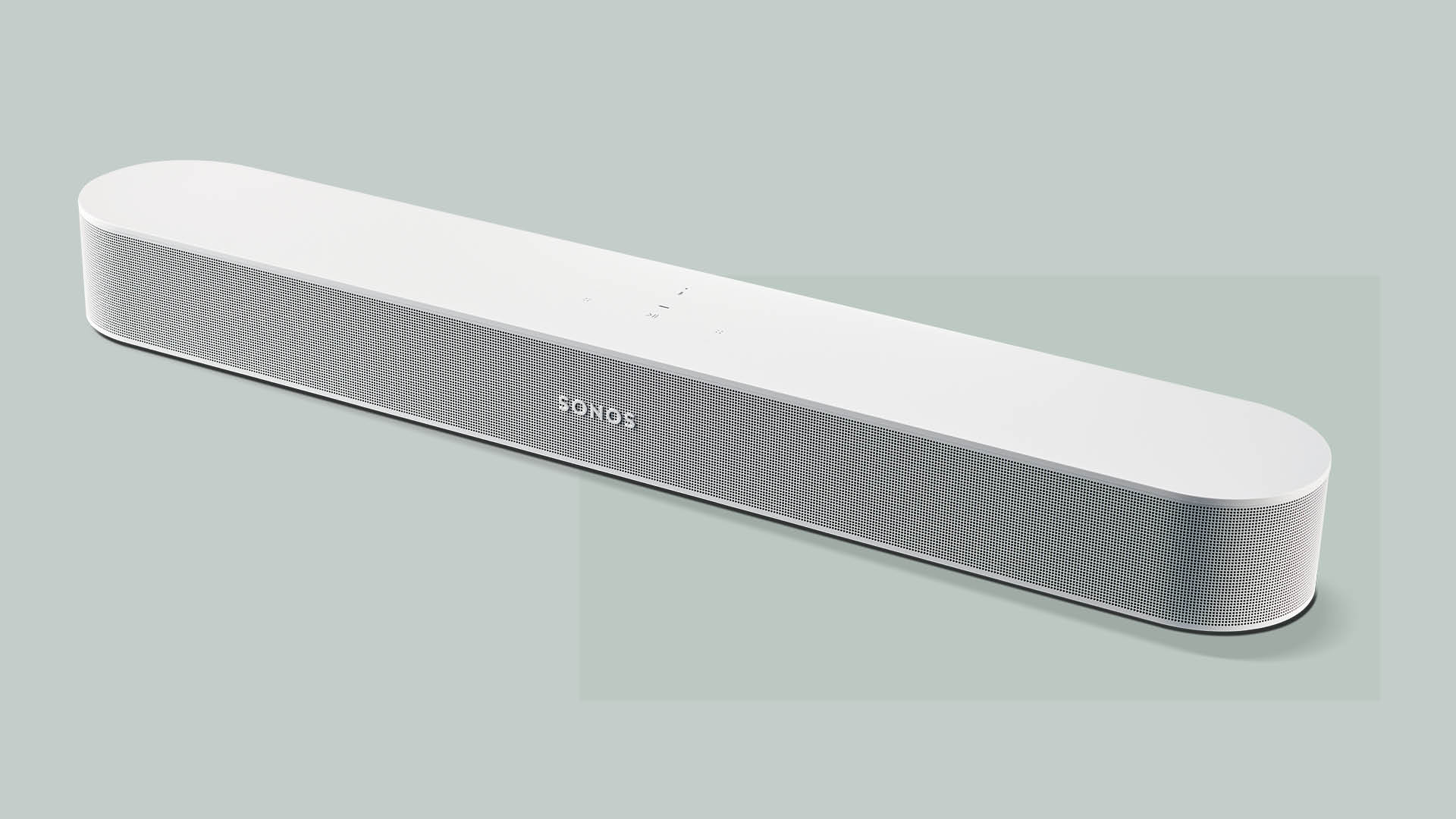
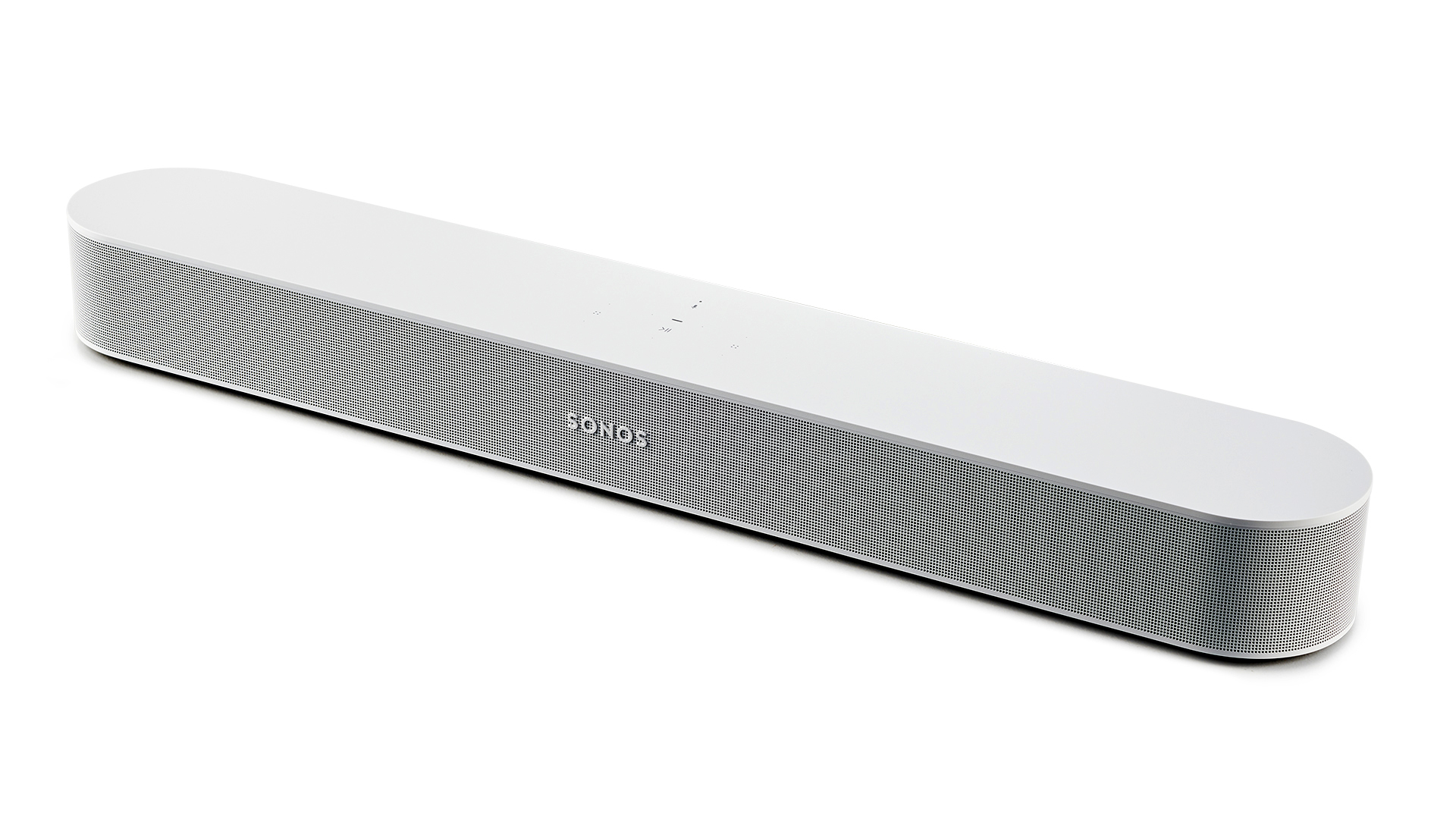
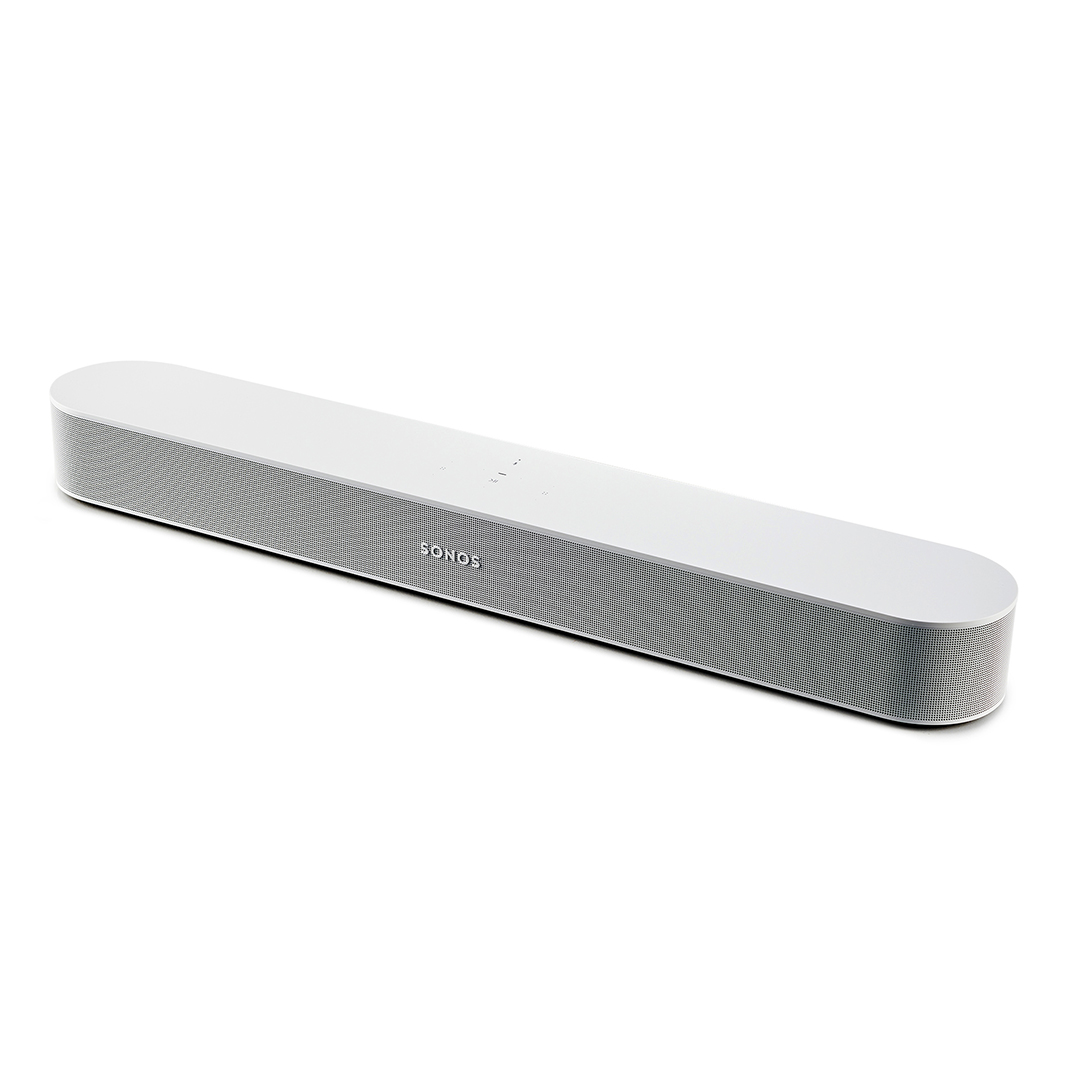
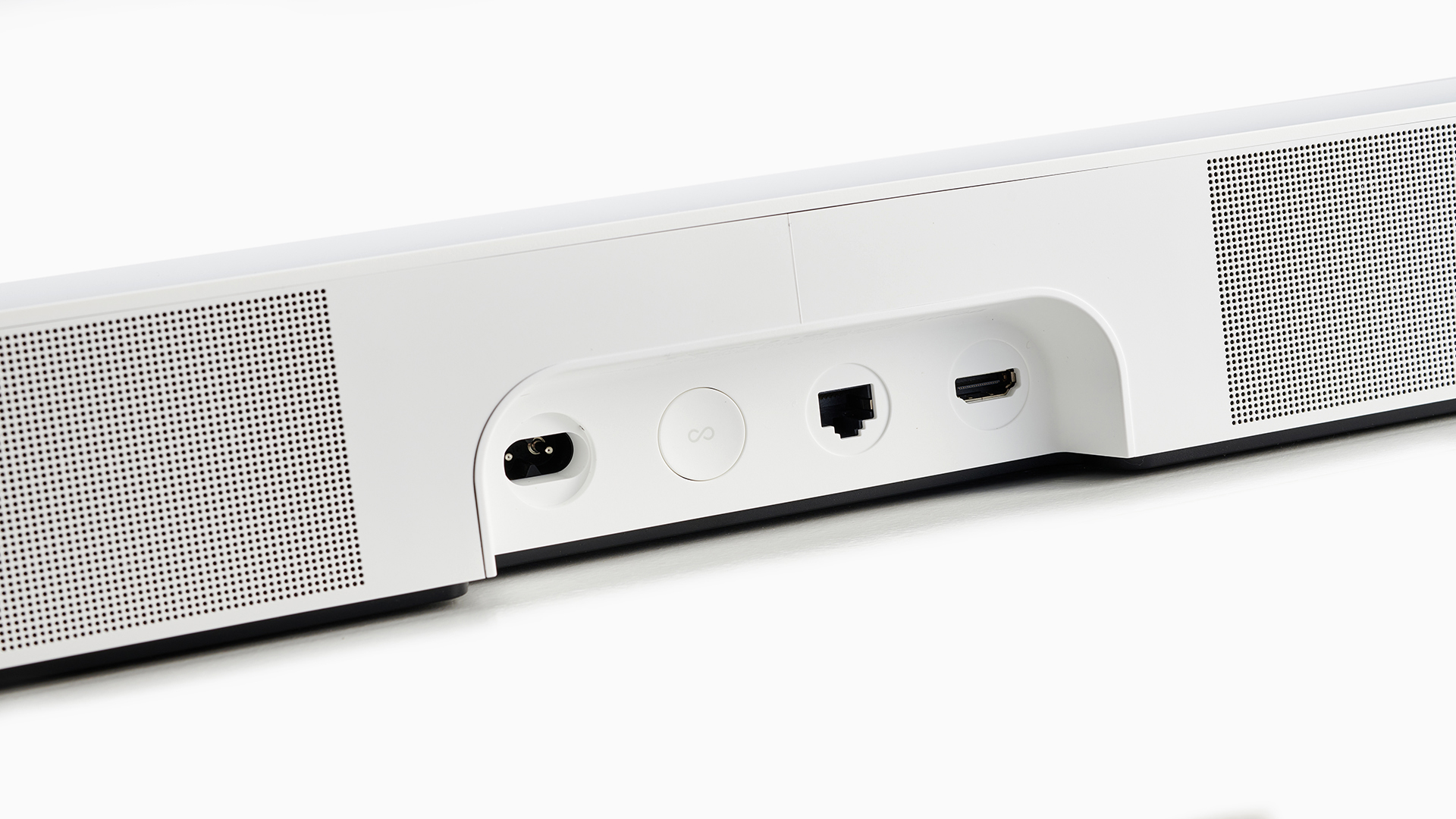
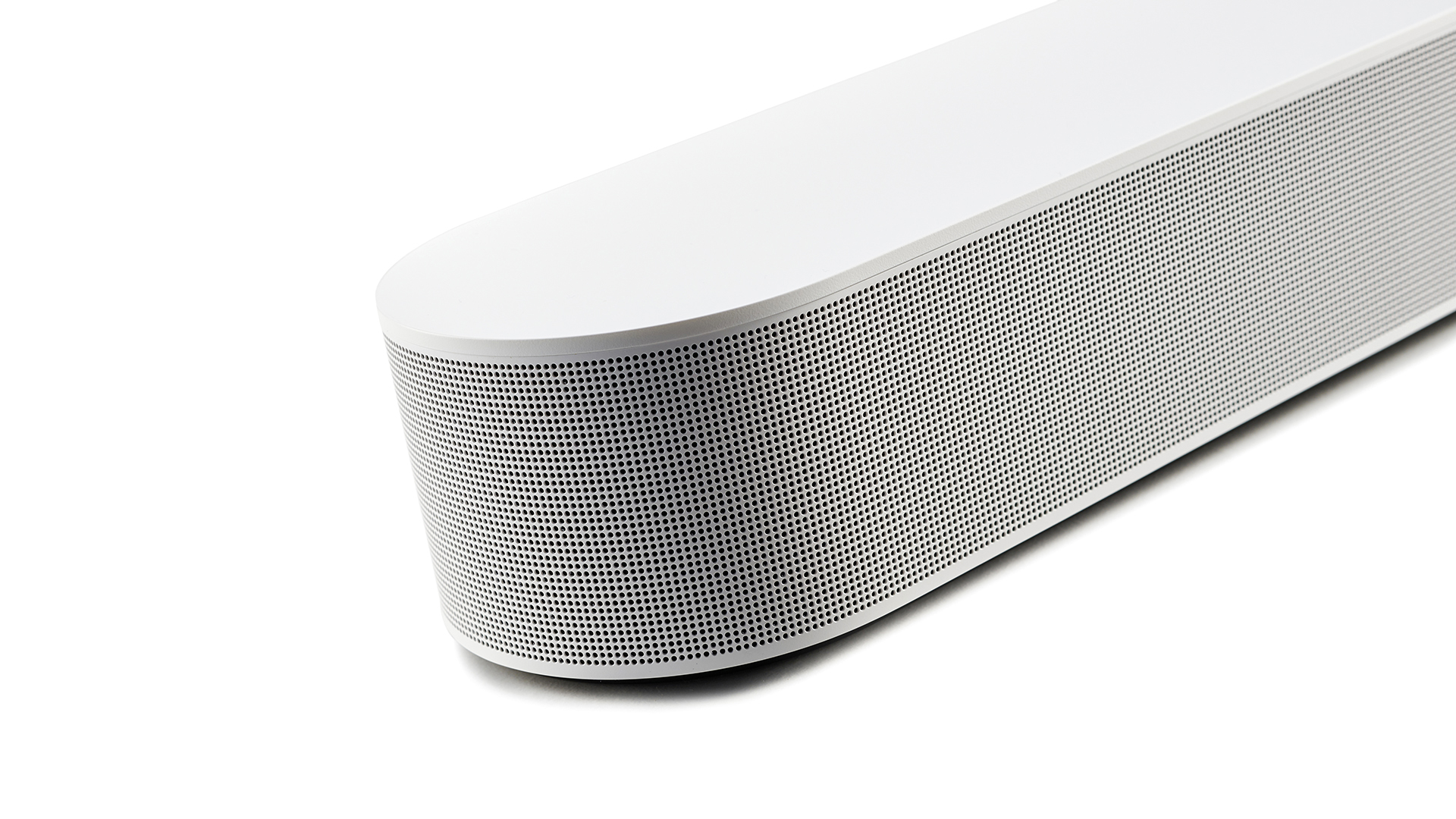
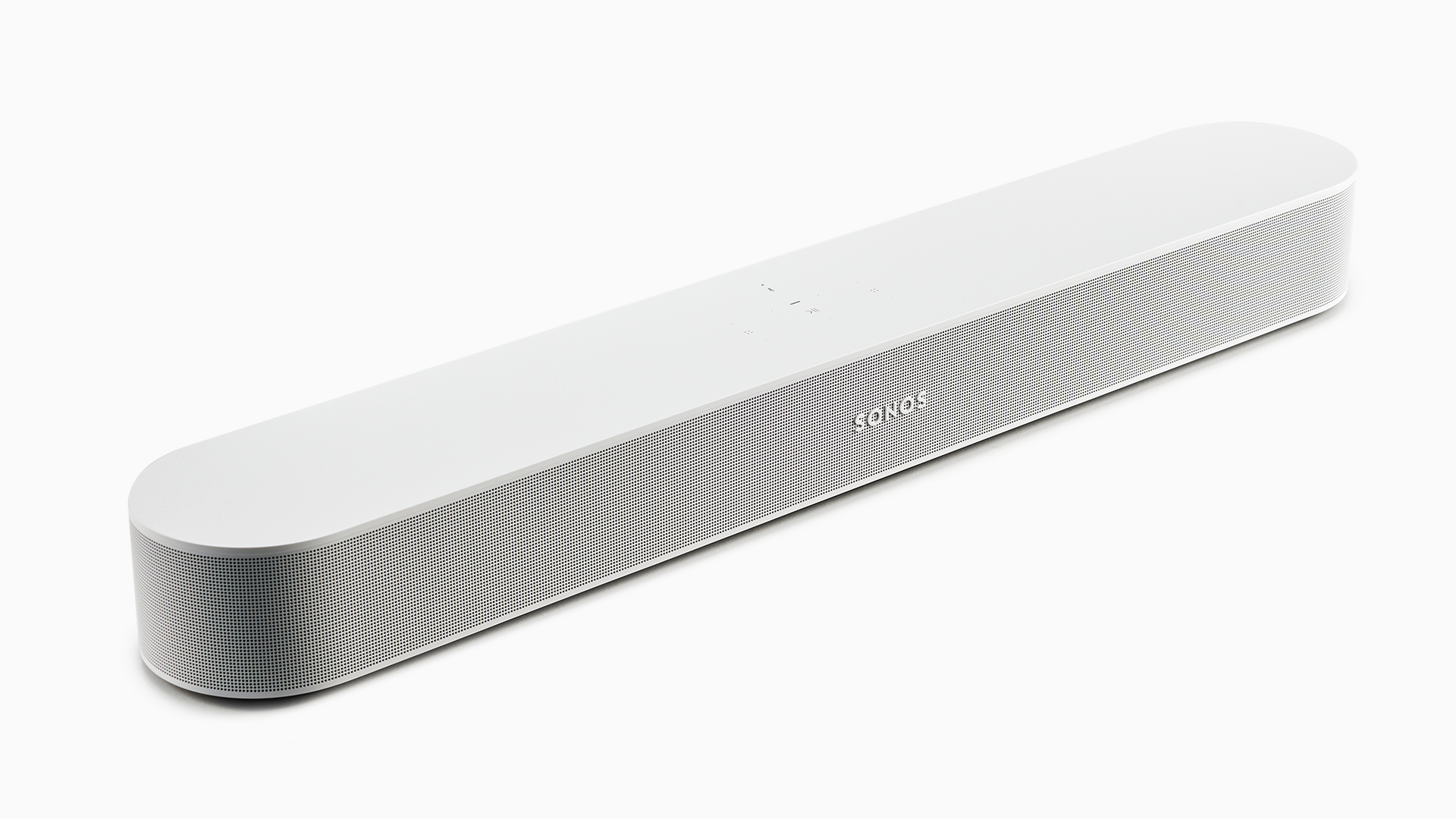
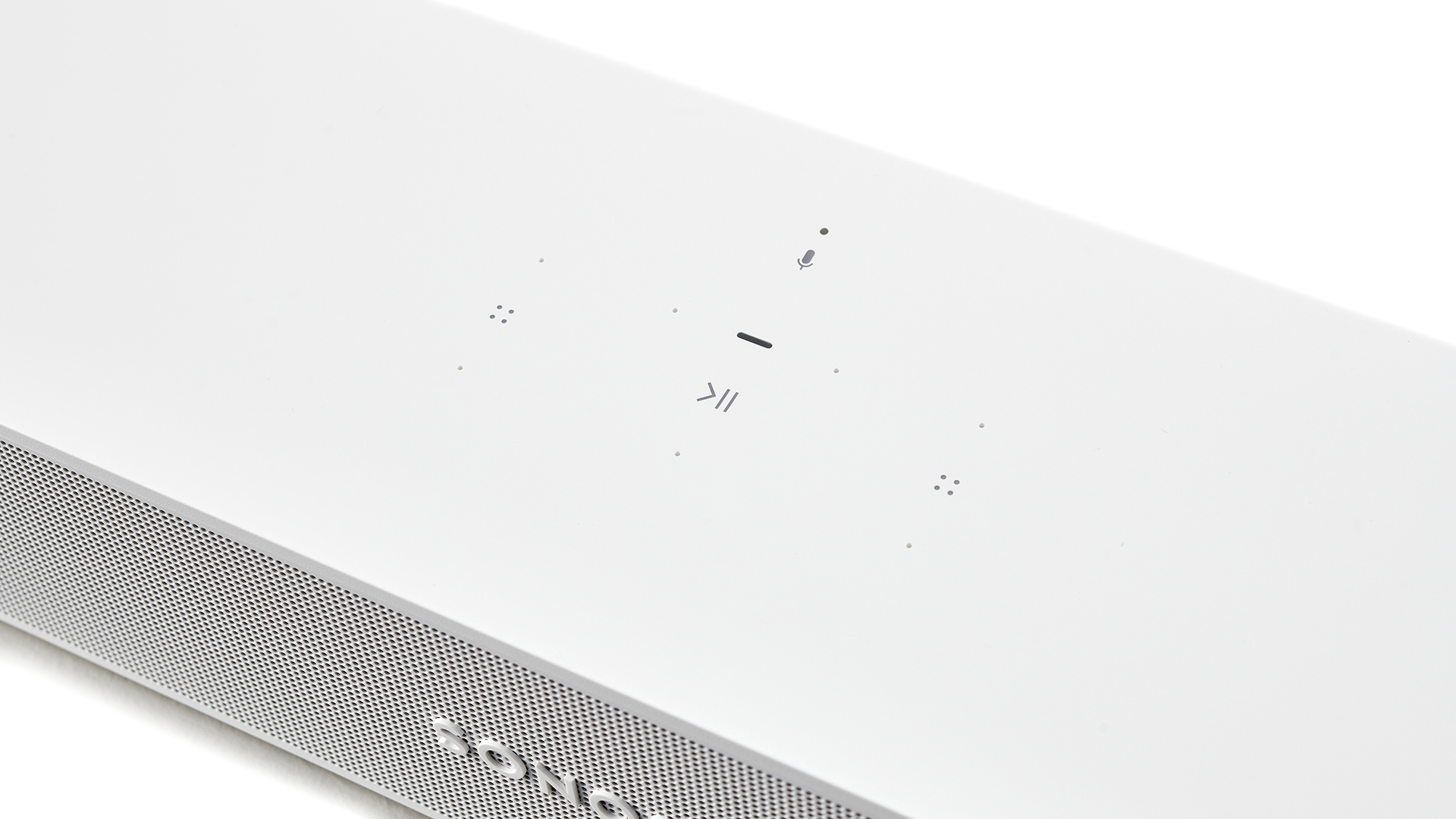
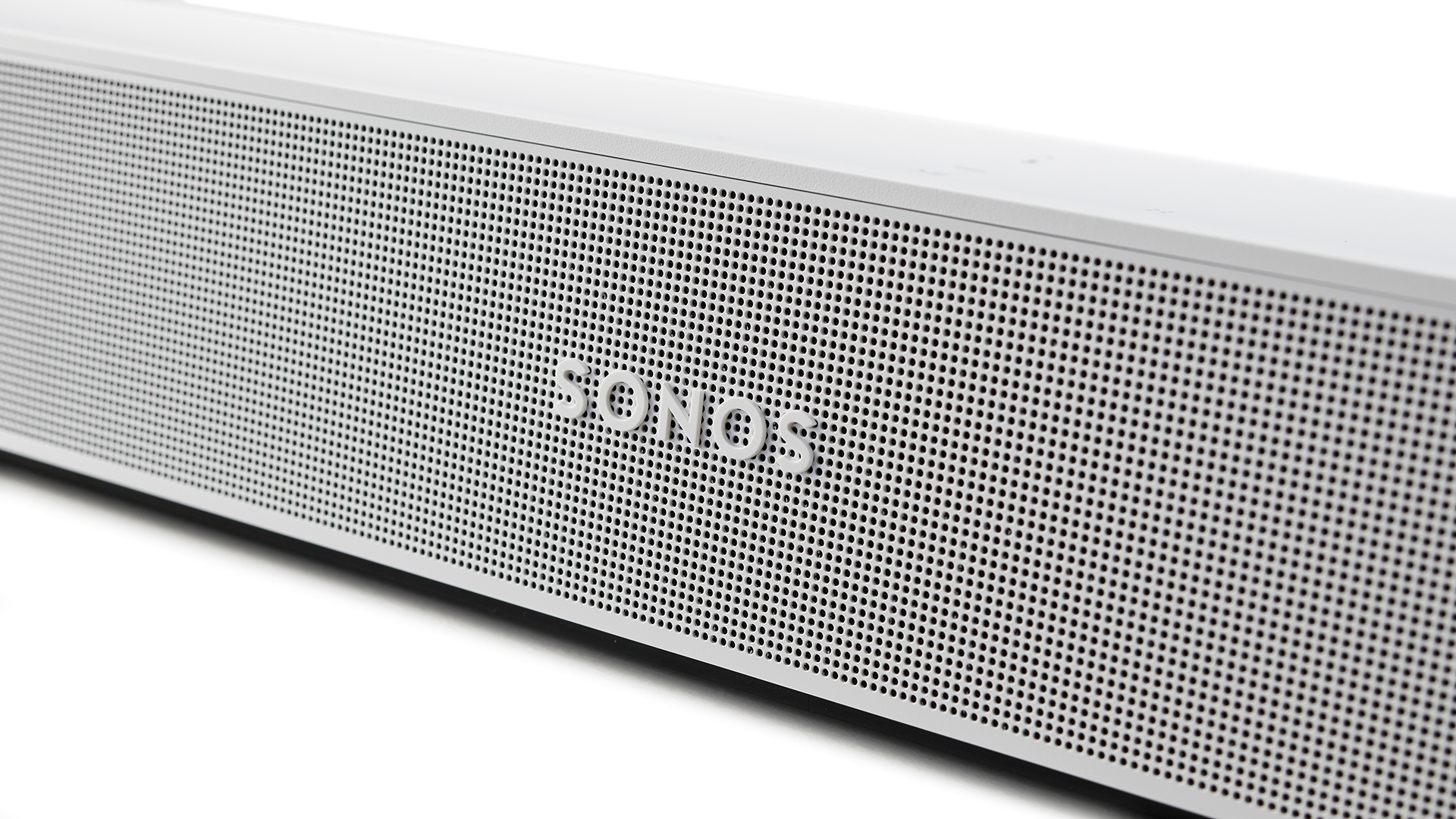
2. Sonos Beam Gen 2
Our expert review:
Specifications
Reasons to buy
Reasons to avoid
Delivering Dolby Atmos from a small chassis is no mean feat but the What Hi-Fi? Award-winning Sonos Beam Gen 2 achieves a convincing, immersive performance without so much as an upfiring speaker in sight.
Instead, when watching Atmos content, two of the soundbar's five front-facing arrays are dedicated to reproducing overhead and surround sounds. With its hefty processing power, the Sonos Beam Gen 2 uses psychoacoustic HRTF (head-related transfer function) technology to give the impression of height without needing to get vertical.
While genuine overhead sounds are perhaps a stretch too far for this petite performer, based on our experience testing it, the bar's virtual delivery of the Atmos format outstrips any similarly priced soundbar and even a few that are more expensive. The Beam Gen 2 offers an enveloping, spatial soundscape with rich, detailed audio as well as tangible motion and depth.
Not that many soundbars at this price point come with networking capabilities, but this being a Sonos product, the Beam Gen 2’s ability to integrate into a wireless multiroom system is fundamental to its design. This means you can stream to the Beam Gen 2 from a handheld device using Apple AirPlay 2, and Spotify Connect is built-in too. Sonos introduced an update to add support for Amazon Music Ultra HD audio too, which gives access to lossless 24-bit/48kHz tracks as well as Dolby Atmos Music.
Don't let the lack of any upfiring drivers put you off. If space and budget are limited there isn't a better Dolby Atmos soundbar that we'd recommend at the money.
Read the full Sonos Beam Gen 2 review
Attributes | Notes | Rating |
|---|---|---|
Sound | Warm and effective handling of Atmos | ★★★★★ |
Features | Robust suite of streaming smarts | ★★★★★ |
Build | Dinky design makes it a great option for small rooms | ★★★★★ |
Best premium
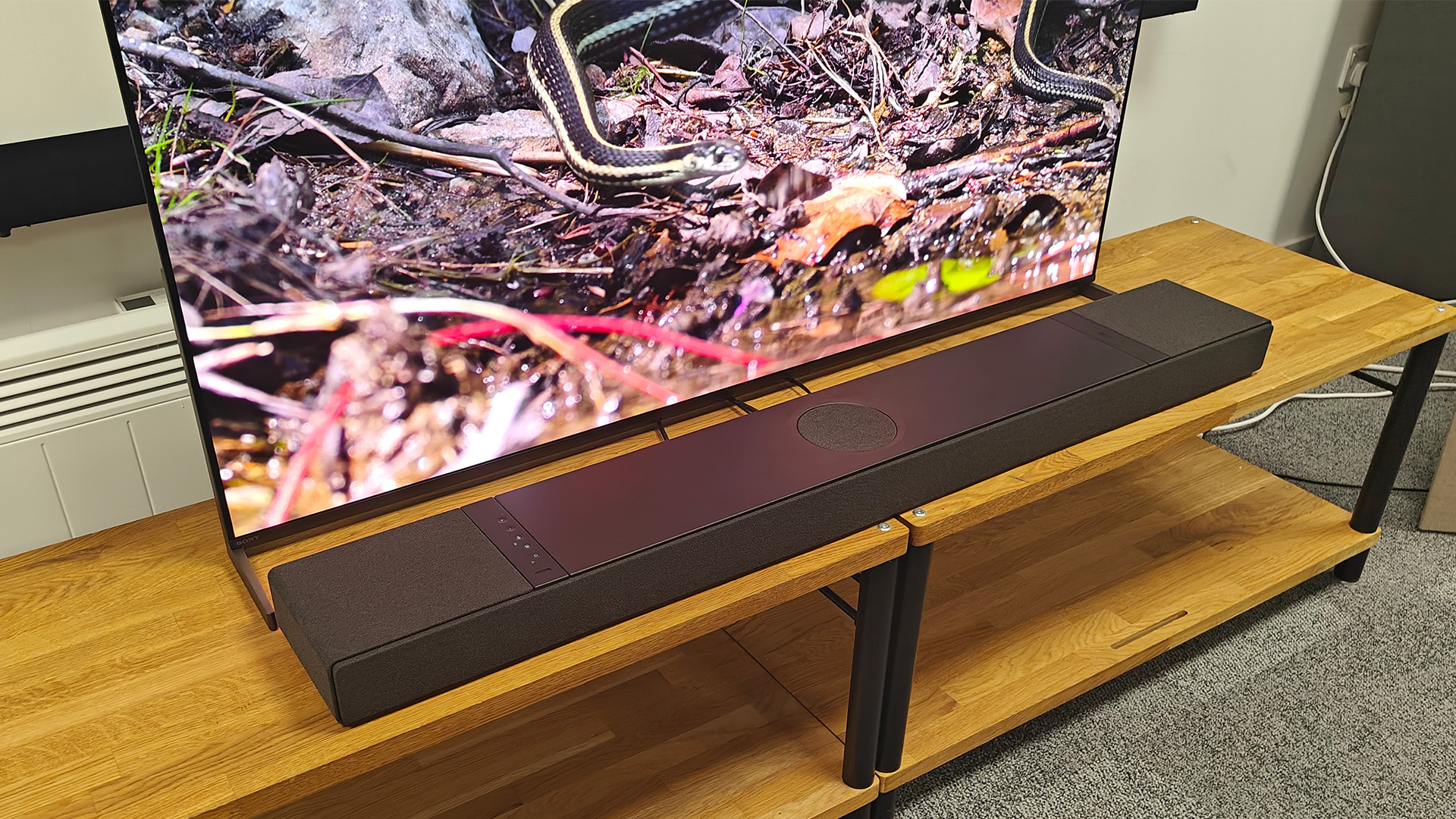
Specifications
Reasons to buy
Reasons to avoid
KEF's first soundbar entry is an impressive piece of kit, performing excellently with both music and movies. Packed full of the company's signature technology such as its Uni-Q MX drivers, it is quite the proposition both inside and outside.
During testing, we experienced a clear and sophisticated sound experience that creates an immersive viewing. When watching John Wick 2, we comment: "One car leaps over a bump in the distance and then moves into the forefront, displaying the soundbar’s sense of precision. You can really feel the three-dimensionality of the sequence as the vehicle moves across the screen."
We would like to see an HDMI passthrough on the soundbar, and the lack of display makes it a little fiddly to navigate. But overall, it's rich and immersive sound is an amazing feat.
Read the full KEF XIO review
Attributes | Notes | Rating |
|---|---|---|
Sound | Rich, immersive sound | ★★★★★ |
Features | HDMI passthrough would be a bonus | ★★★★ |
Build | Compact dimensions with a sleek look | ★★★★★ |
Best cheap
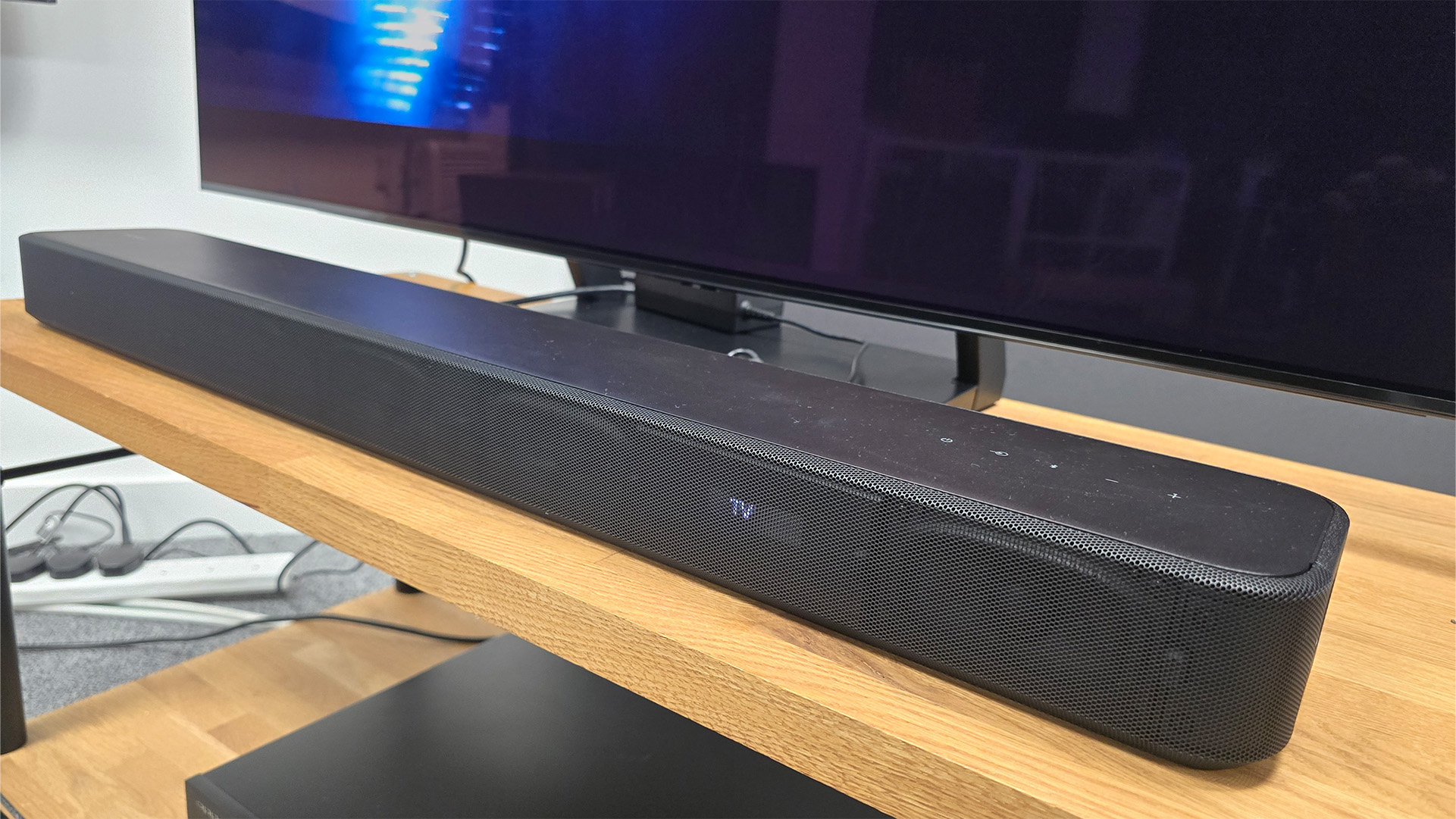
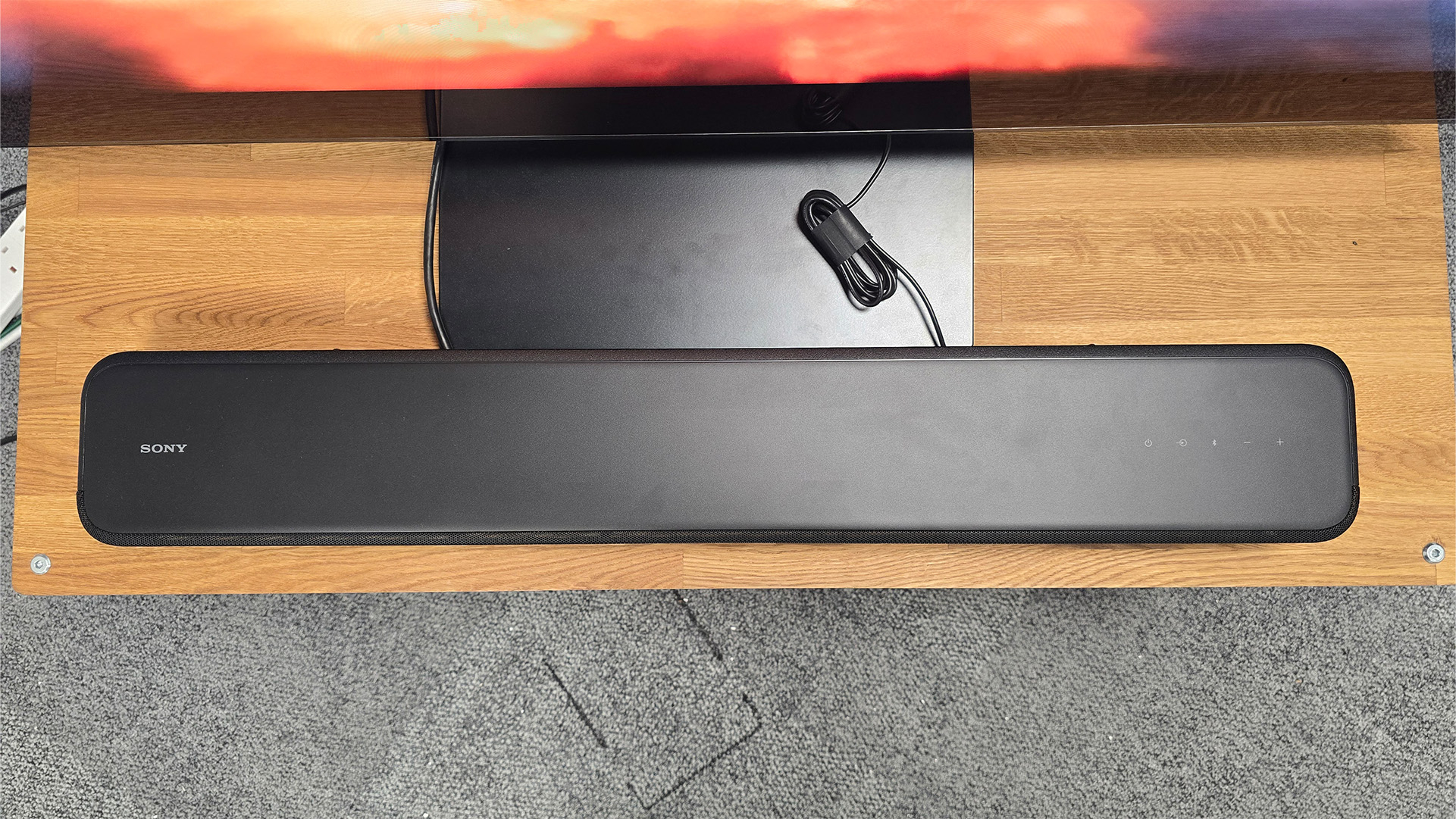
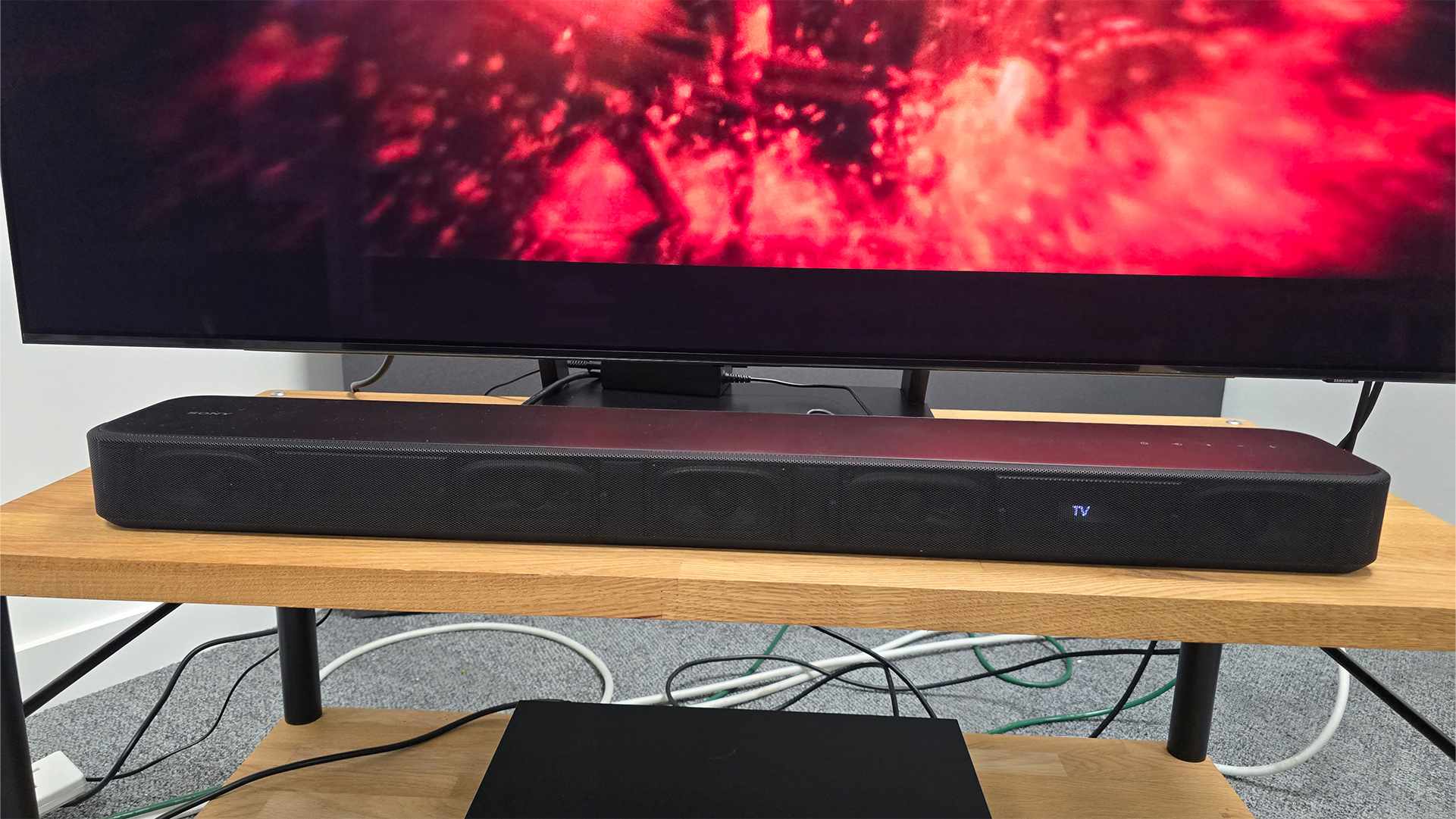
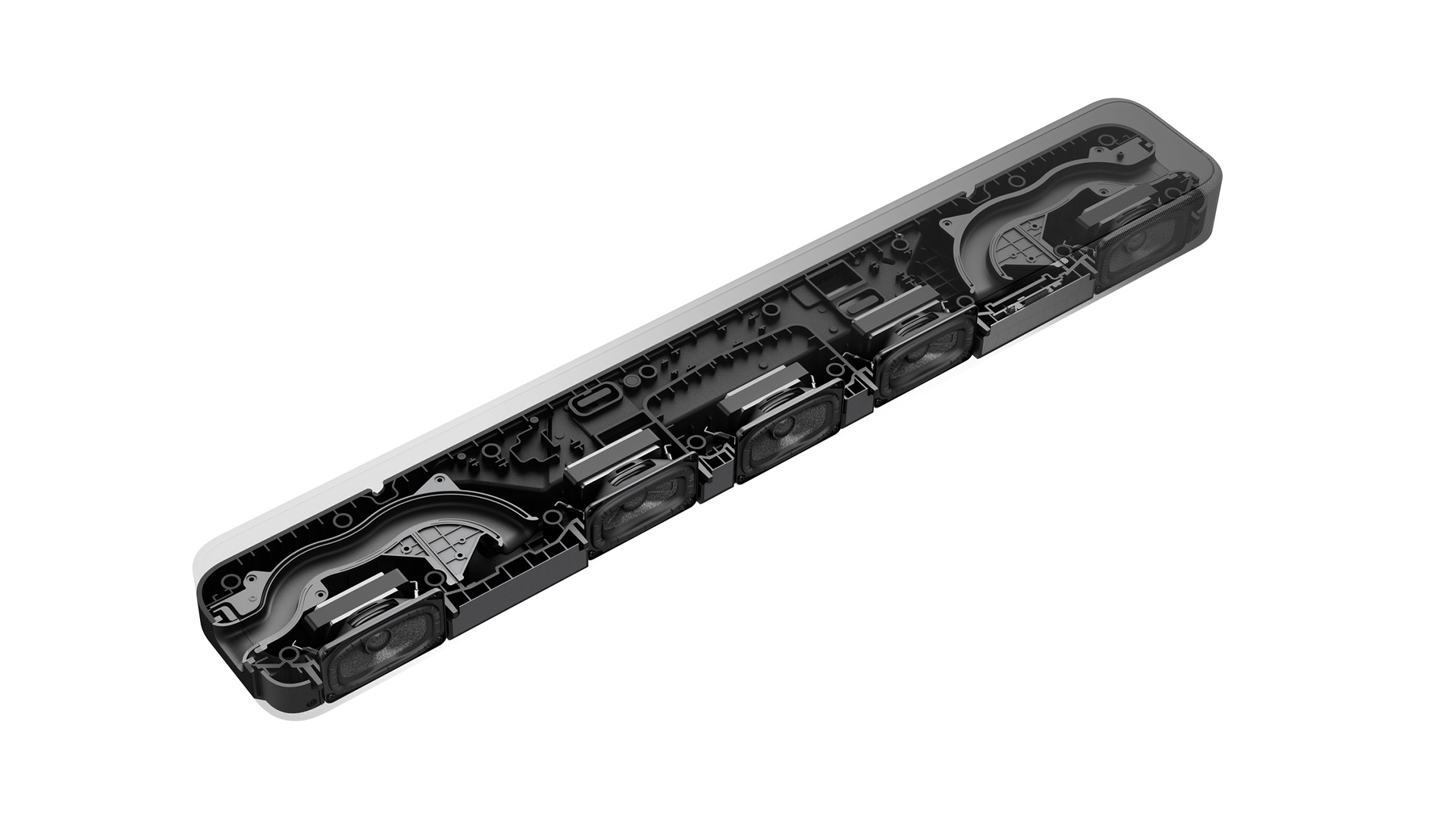
Specifications
Reasons to buy
Reasons to avoid
If you're looking to spend less, the Sony HT-S2000 offers exceptional value for money. It’s a fairly compact bar (slightly wider than the Sonos Beam Gen 2, which is our pick of the smaller bars) that’s focused solely on improving your TV’s audio while keeping the cost down. Sony went with a straightforward design and feature set with the S2000, aiming for an impressive performance over fancy frills.
The soundbar features Bluetooth 5.2 and HDMI eARC – something lacking from comparably priced bars such as the Sonos Ray. It is configured in a 3.1-channel arrangement with a built-in subwoofer and a total power output of 250W. As there are no upward-firing drivers, the height channels for Dolby Atmos and DTS:X compatible audio are achieved through Sony’s Vertical Sound Engine, its psychoacoustic sound processing system.
During the testing process, we grew to really appreciate this bold little Sony soundbar. We admire that it knows where its strengths lie and how it doesn’t try to spread itself thin with unnecessary features. You can spend more on bigger, weightier soundbars, but at this price, the S2000 offers plenty of quality and will no doubt provide clearer, more direct sound than your TV will ever be capable of.
Read our full Sony HT-S2000 review
Attributes | Notes | Rating |
|---|---|---|
Sound | Clear, dynamic sound | ★★★★★ |
Features | No streaming functionality | ★★★★☆ |
Build | Solid and compact | ★★★★☆ |
Best package
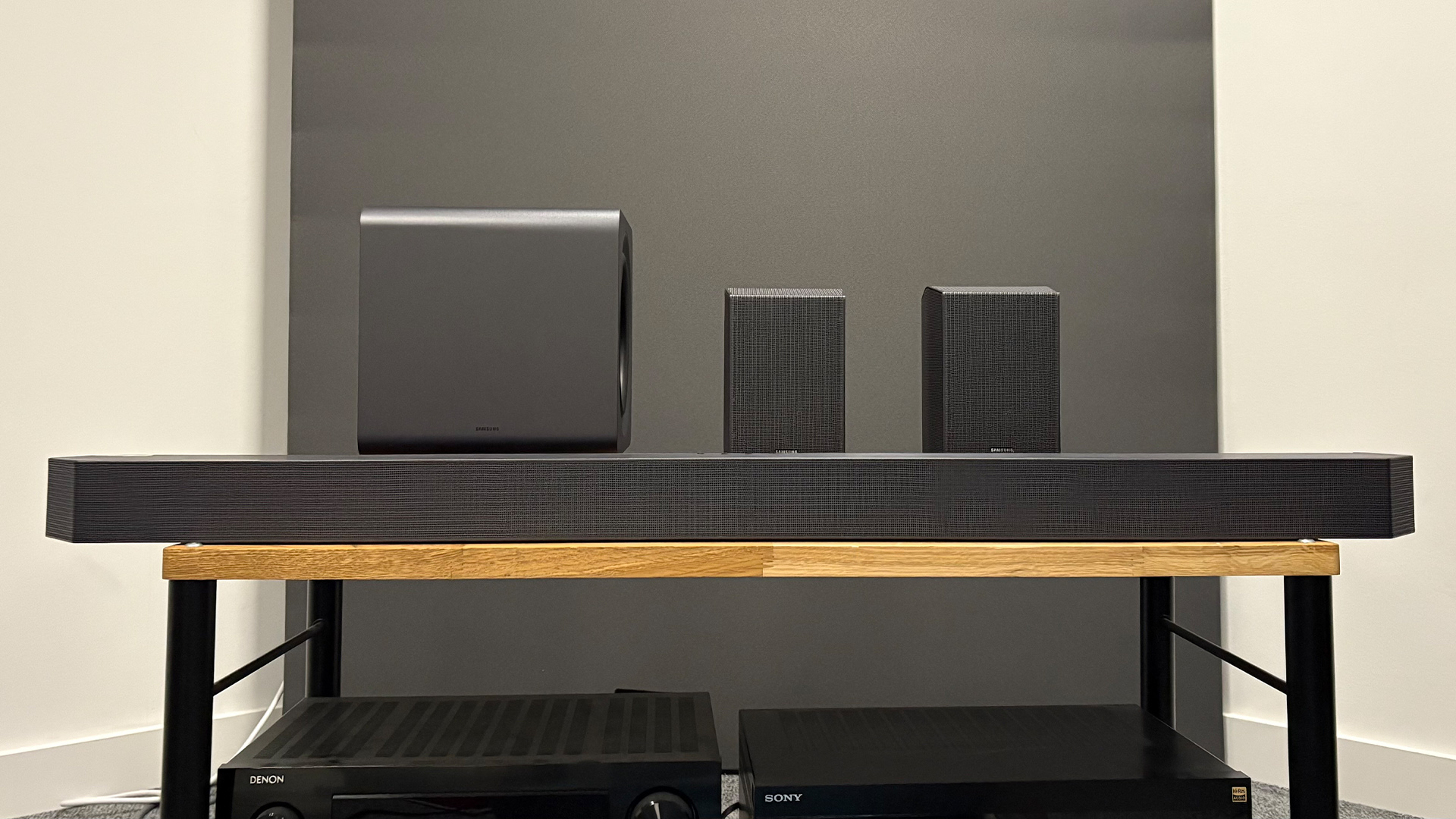

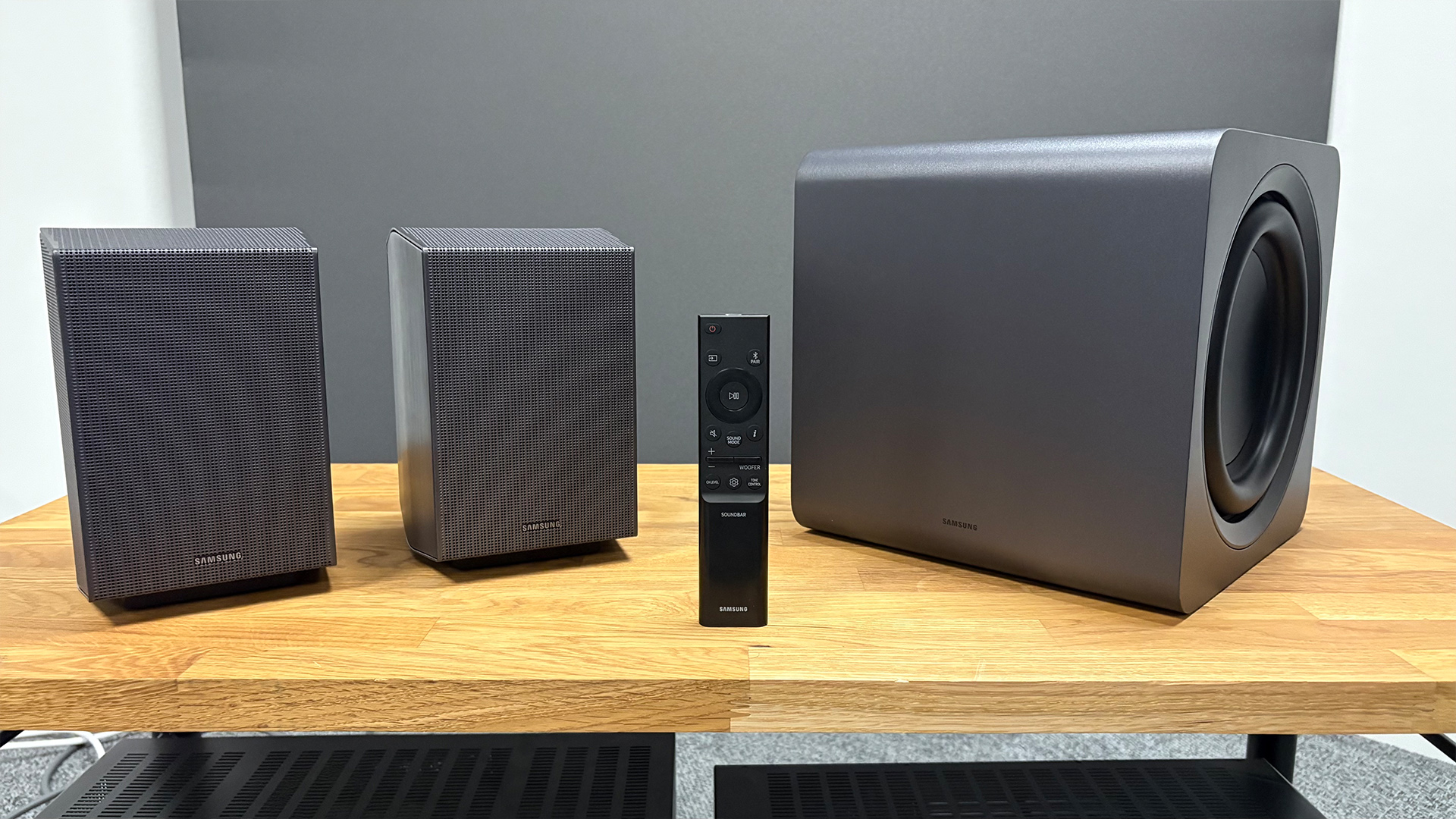
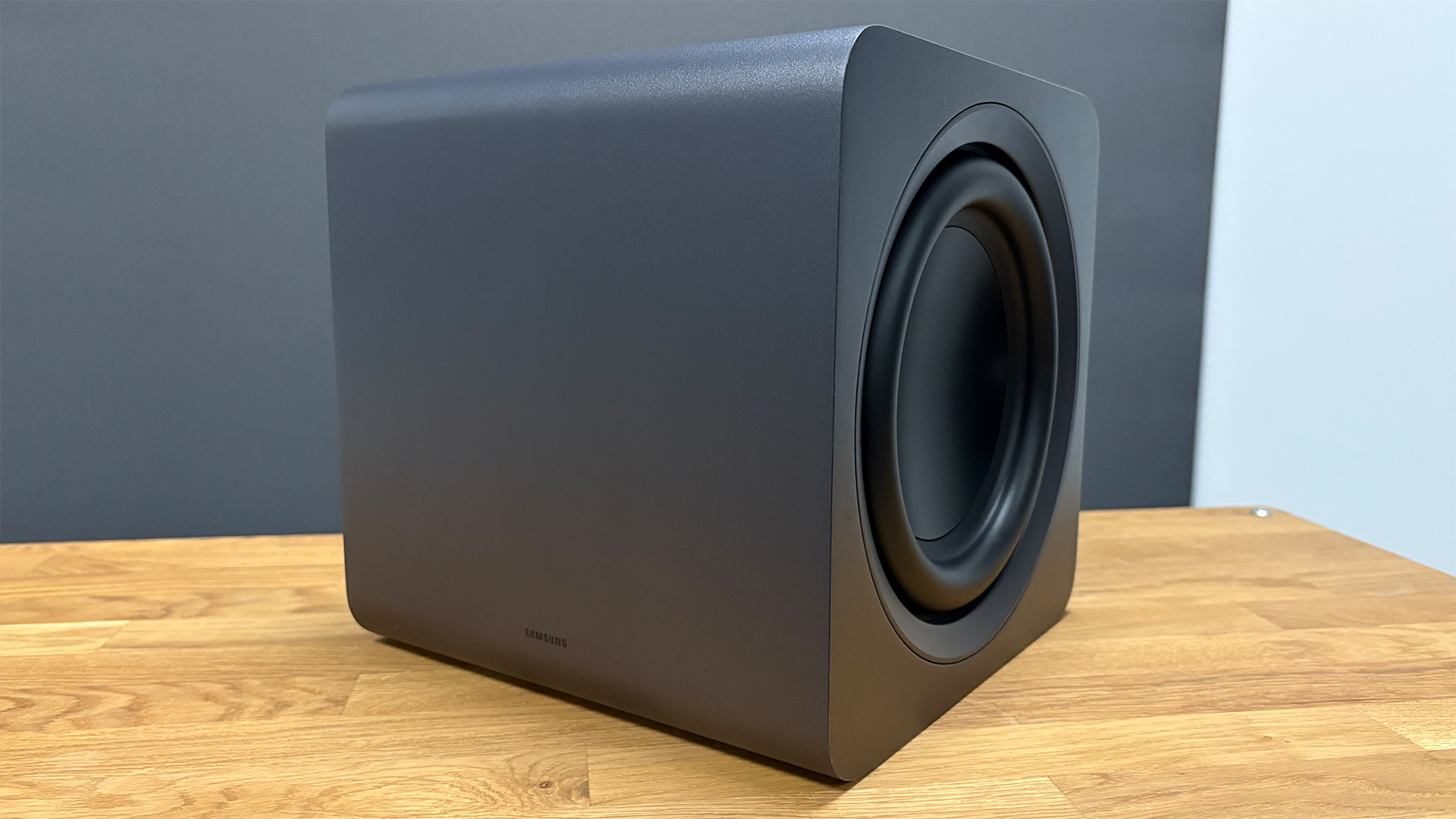
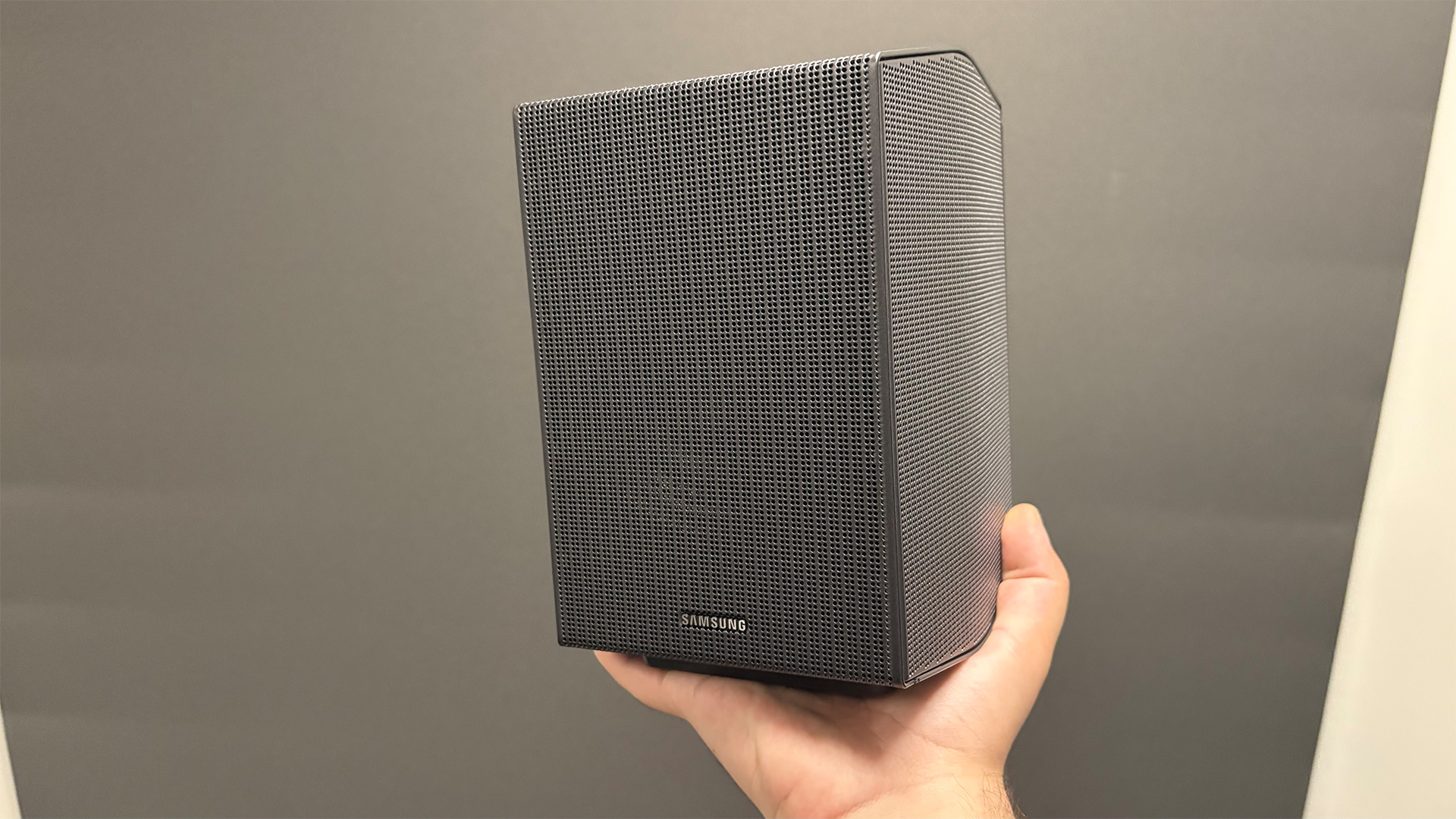
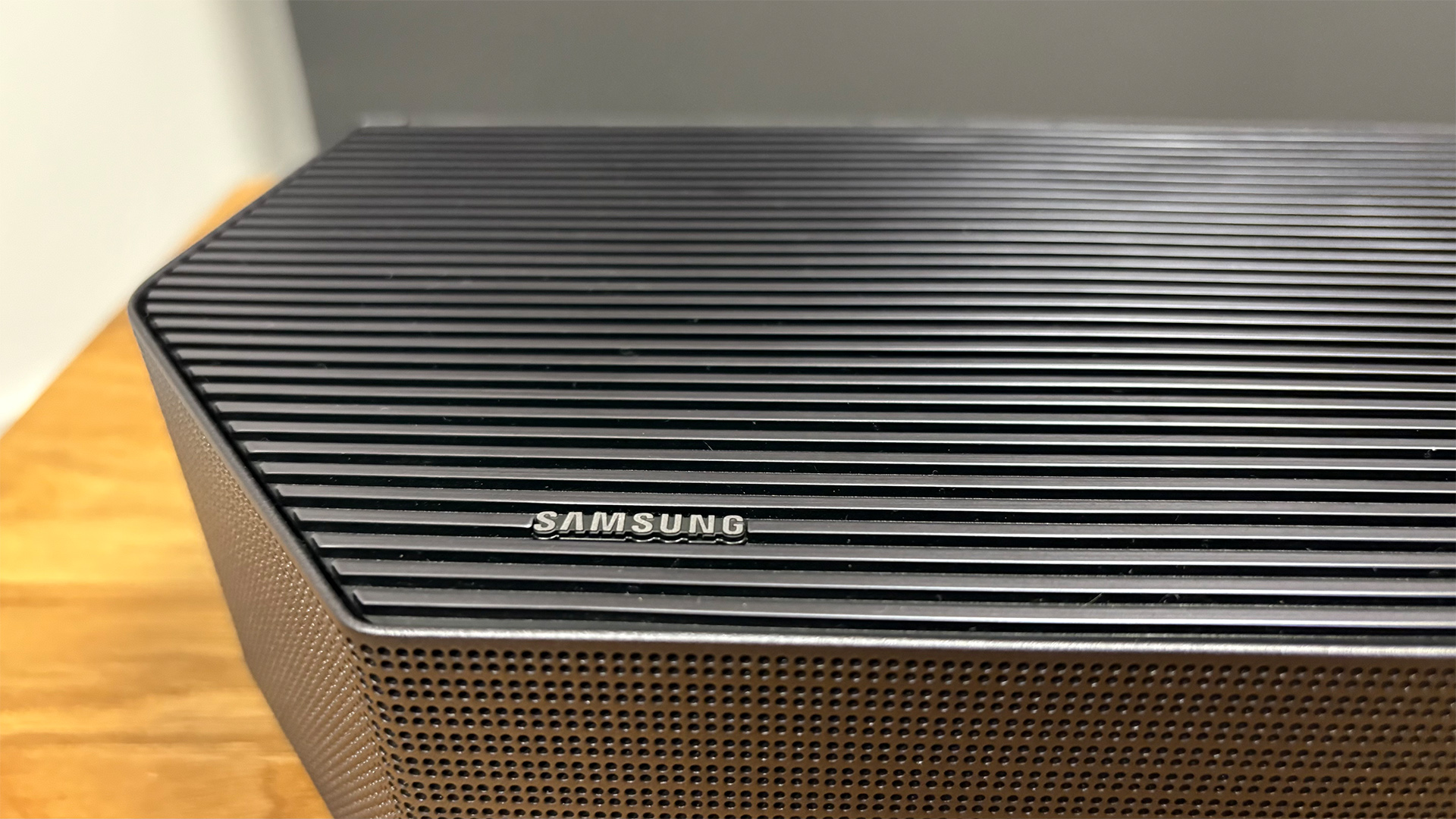
Specifications
Reasons to buy
Reasons to avoid
While we were hugely impressed by Samsung's previous flagship Dolby Atmos system, the HW-Q990D, its successor managed to improve upon its performance and ultimately take the crown for this category.
For many, a full surround system isn't feasible. On the other hand, a lone soundbar might not quite cut it. This is where a soundbar package such as the Q990F steps in.
The system is made up of a soundbar, a subwoofer, and two surround speakers. This all looks quite similar to the Q990D, except for the subwoofer as Samsung has moved from a tall, narrow cuboid sub to a much more compact, rounded-cube design. Side by side, the old subwoofer absolutely dwarfs the new model, with its dimensions of 25 x 25 x 25cm (hwd).
It's an 11.1.4-channel system, with 23 drivers in total. That’s 15 drivers in the main soundbar, three drivers in each of the surround-sound units, and dual 20cm force-cancelling drivers in the subwoofer, which features a claimed 300W power output.
The HW-990F also boasts DTS:X support, HDMI 2.1 passthrough (with 4K/120Hz gaming and Dolby Vision support), and countless sound modes.
But how does it sound? The Q990F is simply excellent, presenting us with detailed and rich audio that is hard to beat at this level.
As we said in our review: "This system should be on the radar for anyone who wants a full Dolby Atmos experience without having to buy an AVR or finding the space to place countless speakers around your room. The compact new cube subwoofer is easily the star of the show, offering a richer, more focused sound with greater tonal variation."
Read our full Samsung Q990F review
Attributes | Notes | Rating |
|---|---|---|
Sound | Clear, detailed, dynamic sound | ★★★★★ |
Features | HDMI 2.1 and plenty of streaming options | ★★★★★ |
Build | Solid build but limited display | ★★★★☆ |
Best cheap package
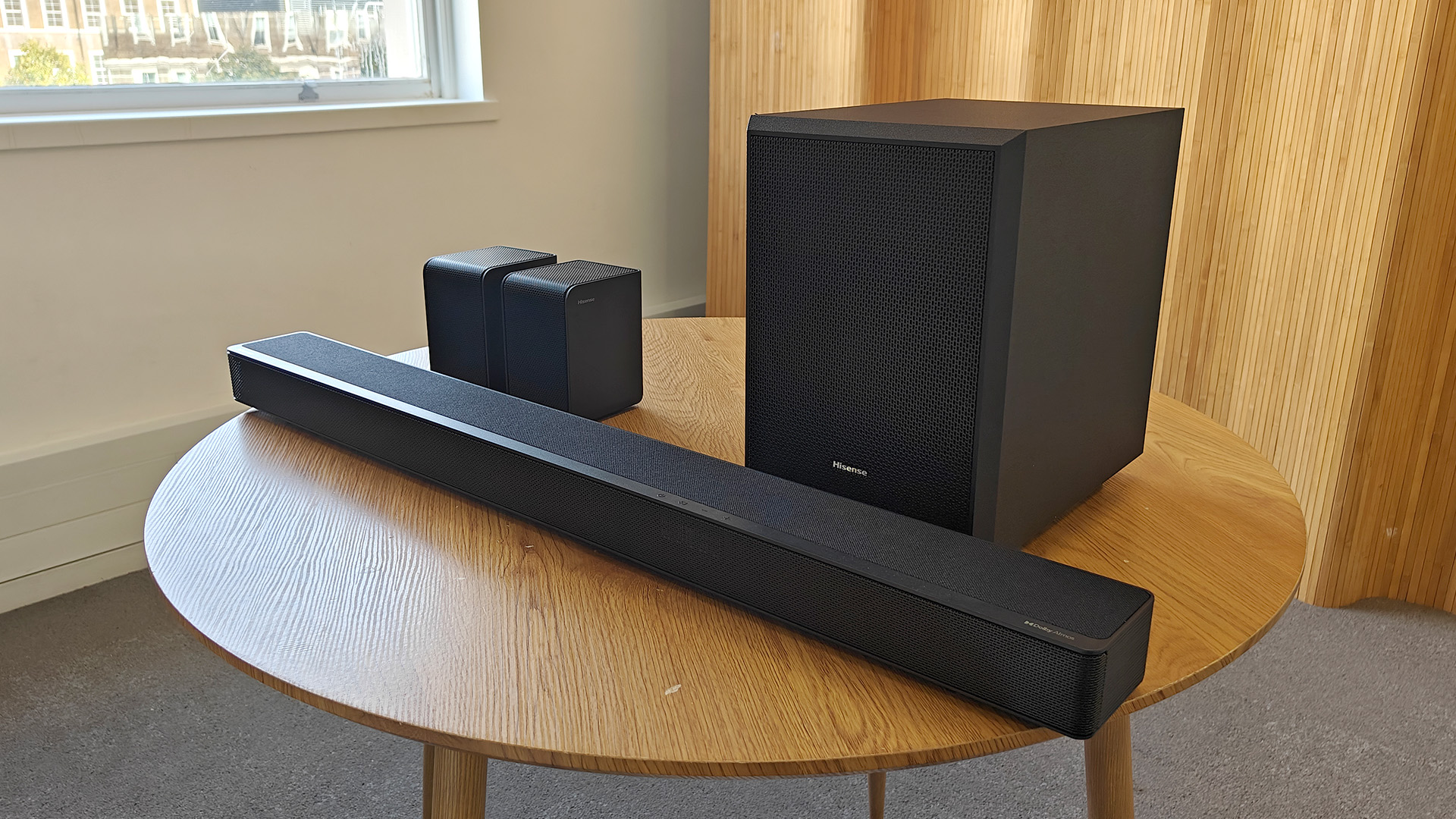
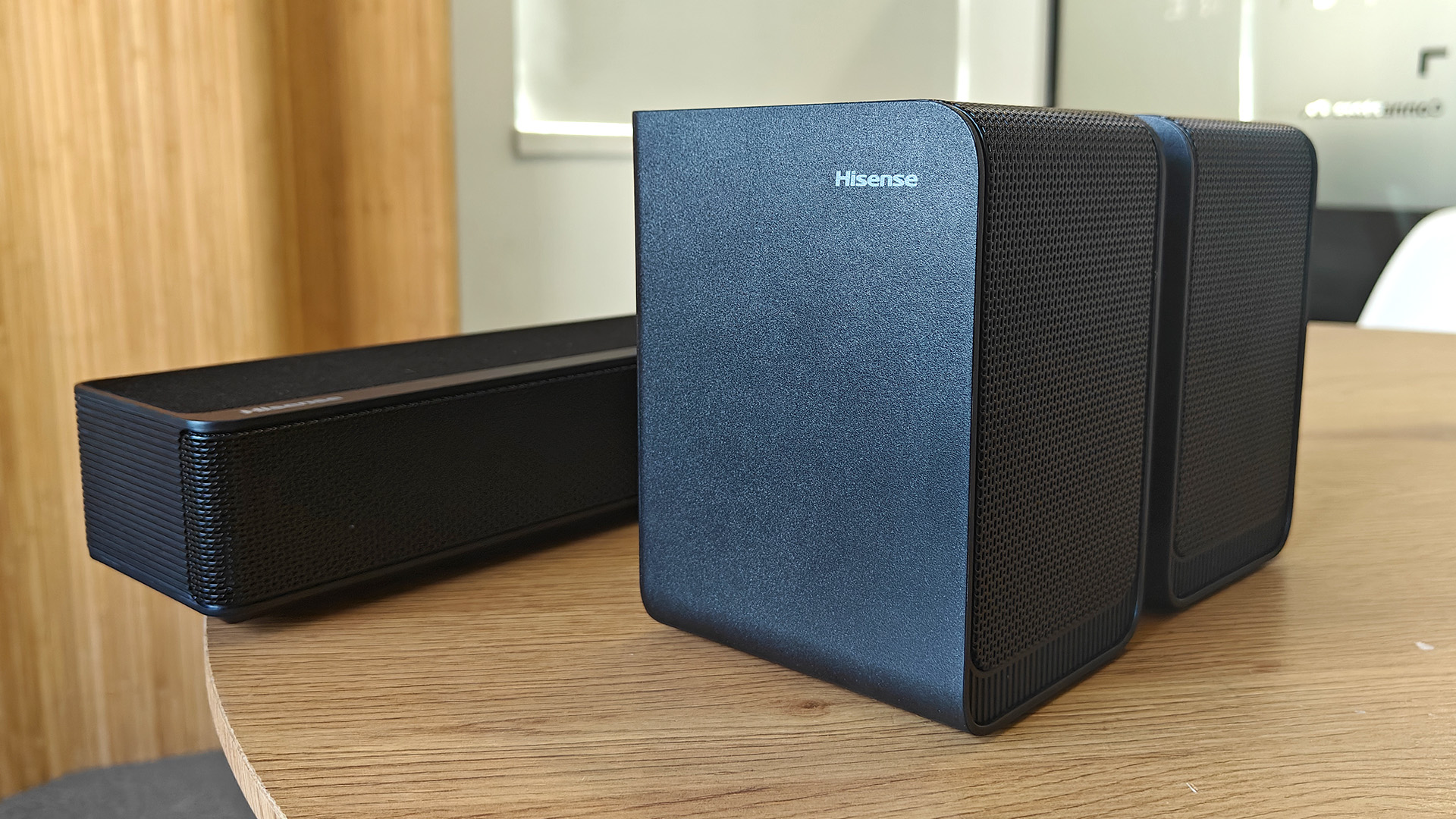
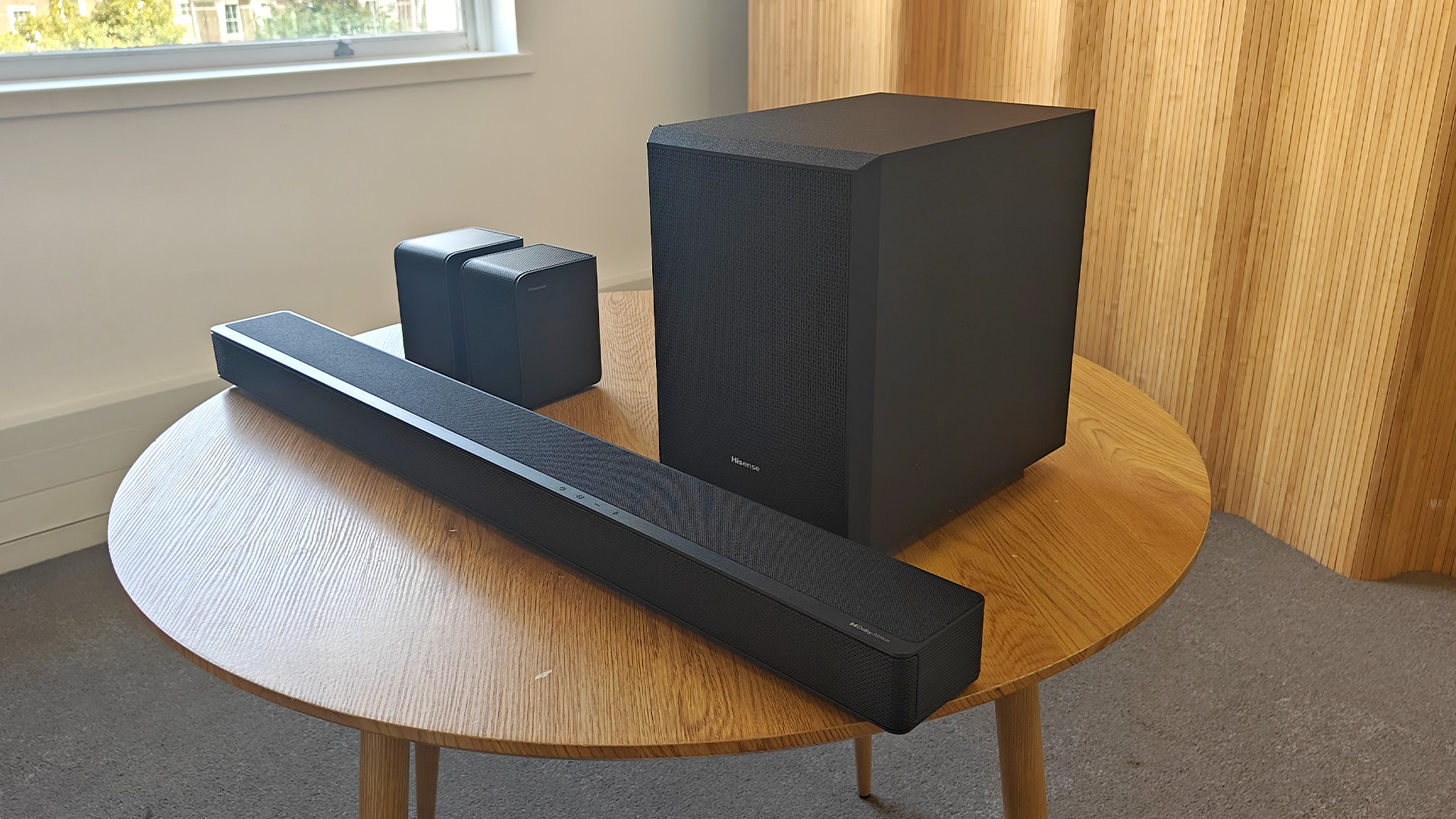
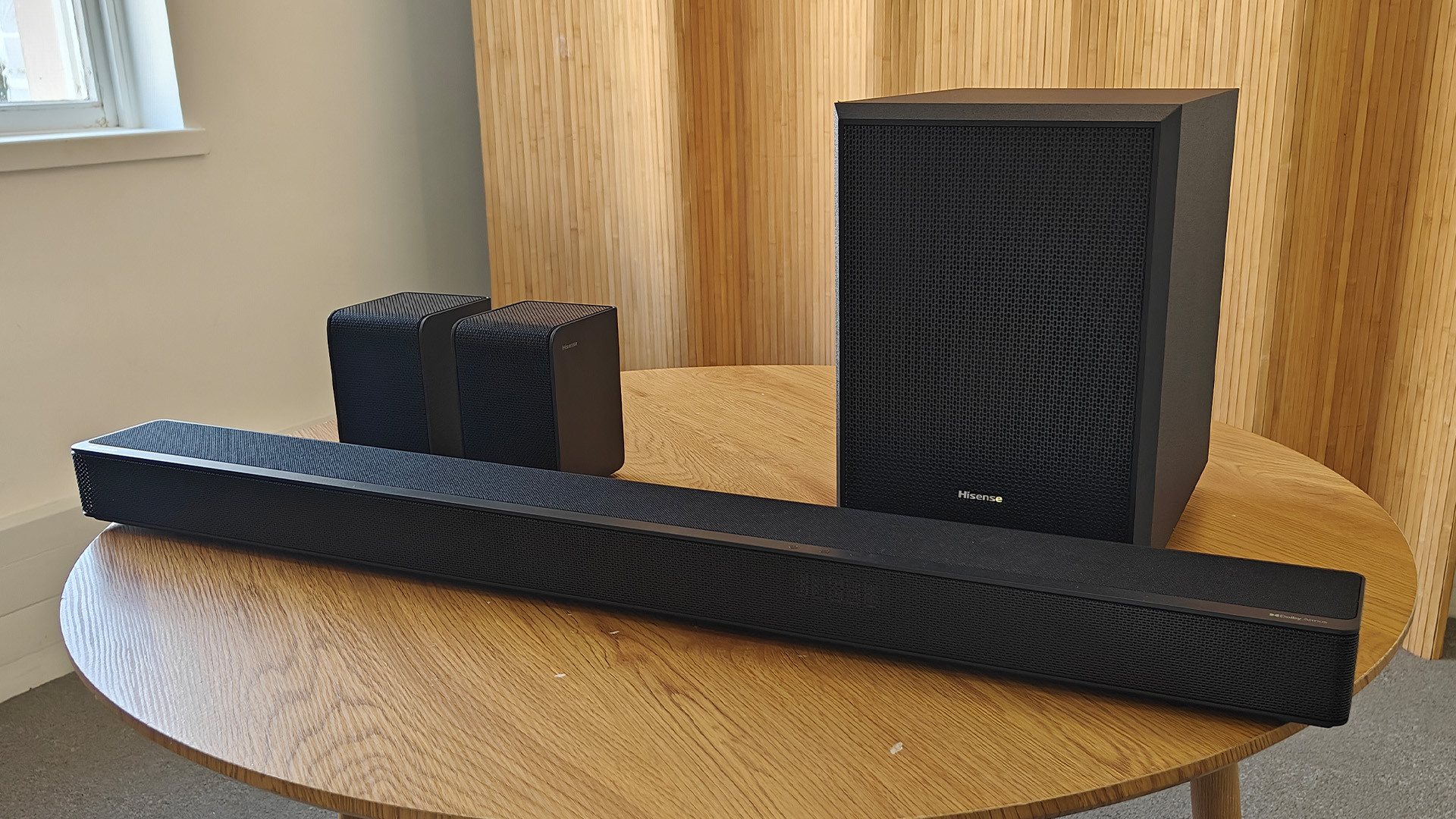
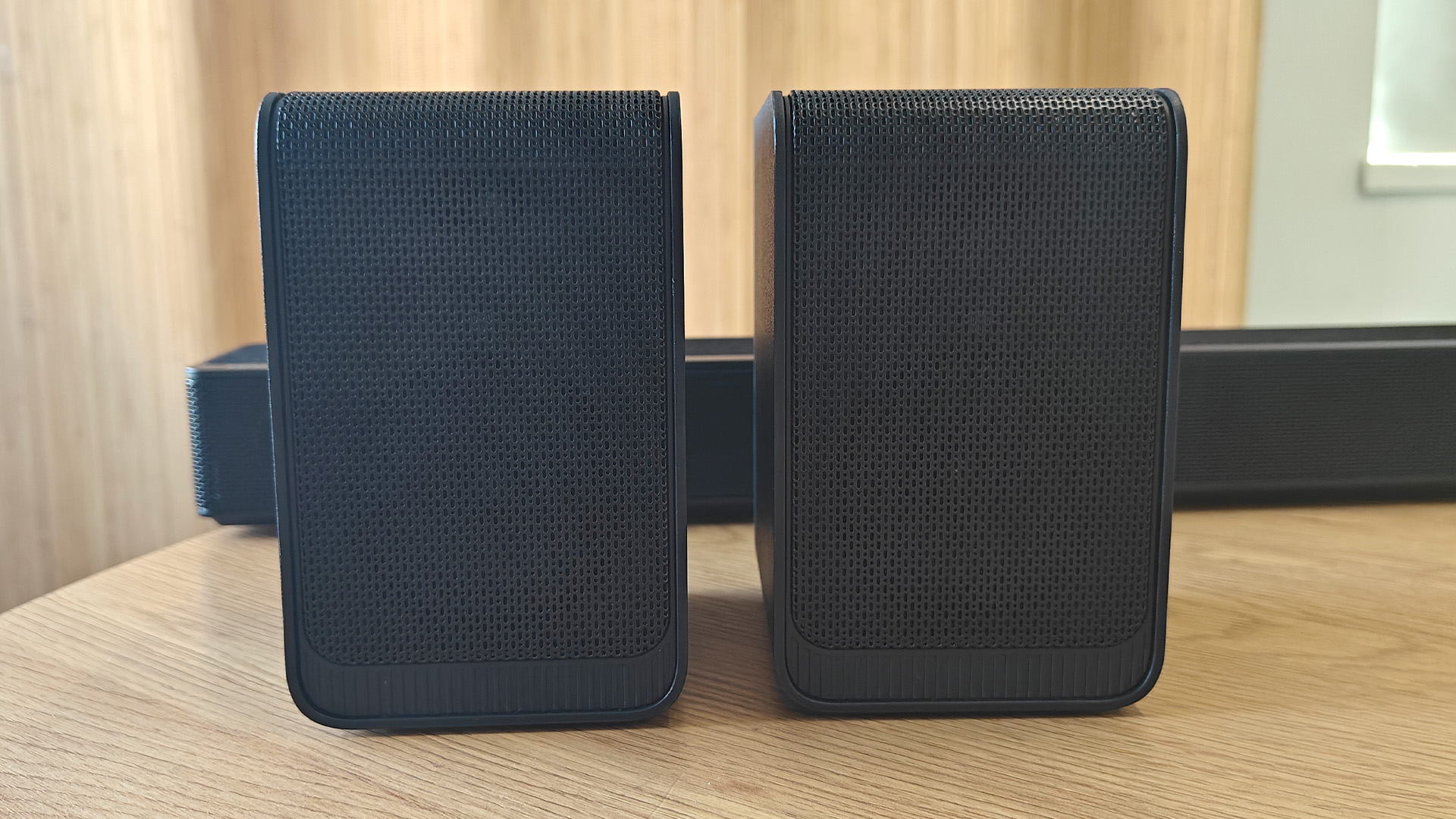
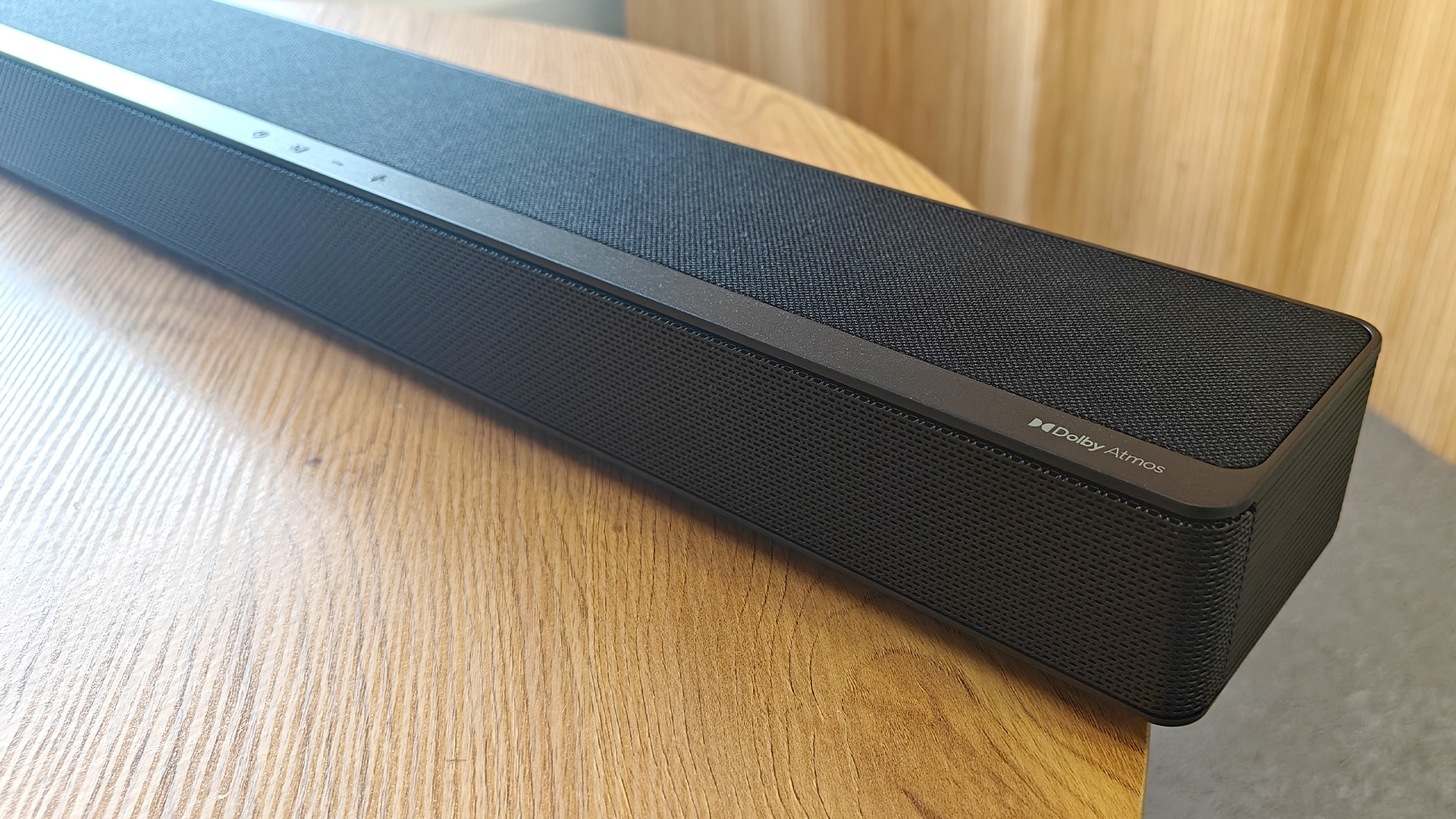
Specifications
Reasons to buy
Reasons to avoid
If your budget can't quite stretch to the Samsung Q990F (above), then the five-star Hisense AX5125H is a great choice. We tested it at £249 / $350 and, as if that wasn't enough of a bargain, we have already seen it drop to as low as £199 in the UK.
The included soundbar, subwoofer, and two surround speakers are simple to set up as well, although there's nothing too interesting being done when it comes to their basic design.
All these parts work together to create a cohesive, detailed sound that is simply the best we have seen at this price.
In our review, while watching Civil War, for example, we say: “Explosions and deep gunfire have good impact and solidity, and there’s just about enough tonal expression for bassy soundtrack elements to sound reasonably musical.”
Vocals are clear and sound relatively emotive too, although the subwoofer can get a little overzealous and cause them to become muffled in the busiest sections.
It still offers a cinematic audio performance that is an instant upgrade on most TV's built-in speakers.
Read the full Hisense AX5125H review
Attributes | Notes | Rating |
Sound | Incredible scale and spaciousness | ★★★★★ |
Features | DTS:X and Dolby Atmos support | ★★★★★ |
Build | Easy to use but basic design | ★★★★☆ |
Also consider
The best Dolby Atmos soundbar alternatives we've tested:
Sony Bravia Theatre Bar 9: If the Arc Ultra doesn’t meet your fancy we’d recommend the Sony Bravia Theatre 9. We compared the two head-to-head and found it is an excellent alternative. Though its bass isn’t quite as punchy, which is why we gave the Arc the top slot, it offers competitive performance and a slightly better sense of height with its audio.
Sonos Arc: The Arc Ultra is a replacement for the original Arc. But while stocks last the original is still a fantastic option, especially as it has been very heavily discounted since the Ultra launched. If you can’t afford the Ultra, we’d strongly recommend checking out the original Arc as a result.
Sony HT-A3000: In terms of pricing and features, the Sony HT-A3000 is just like the Sonos Beam Gen 2. Its detail and dynamics will improve the sound from a lot of TVs, but the main drawback is that it struggles to match the Sonos in terms of Dolby Atmos audio.
Sennheiser Ambeo Soundbar Plus: This soundbar pushes the dominant Sony HT-A7000 closer than any of its rivals. Dolby Atmos sounds wonderfully spacious and immersive, it's easier to accommodate and the Sennheiser is also packed with useful features including two HDMI inputs.
LG S70TY: This soundbar and subwoofer package is a new addition to the list, impressing during testing with its balanced performance and good sense of height. Launching as a mid-range 'bar, it has already seen some decent discounts if you are looking for something on the cheaper side.
How to choose the best Dolby Atmos soundbar for you
Why you can trust What Hi-Fi? Our expert team reviews products in dedicated test rooms, to help you make the best choice for your budget. Find out more about how we test.
A slew of Dolby Atmos soundbars have hit the market in the last couple of years, and there's now a range of models to suit most budgets. The more you spend, the more features you tend to get and the more driver units the soundbars tend to use; hence, most of our entries tend to be pricier than ordinary soundbars.
In our experience, spending more also means you should get a more convincing home cinema sound, although some of the poorer-sounding soundbars could easily be outperformed by a more affordable model.
There are a few things to consider when weighing up a Dolby Atmos soundbar. A lot will hinge on the size and dimensions of your TV. This will influence the size of the soundbar you go for; after all, you won't want to use a tiny bar with a huge 77-in TV.
Also, check the height of the soundbar – if you need to place it directly in front of your TV, you don't want it obscuring half the picture. Also, upfiring drivers need a clear line of sight to your ceiling to be effective.
It's important to note that not all Dolby Atmos soundbars have upward-firing drivers. Some decode the format and present it virtually using DSP processing to create an illusion of a 3D soundstage. The performance of virtual Atmos models varies, and while genuine height effects are certainly beyond their scope, there's more to Atmos than just the Y-axis. In some cases, a high-quality virtual Dolby Atmos soundbar can deliver more immersive and engaging sound than a mediocre model with upfiring speakers.
Whenever a soundbar does have height drivers, it's important to remember that you'll get better results if you have low ceilings to bounce the sound off and that the top of the soundbar needs to be uncovered and placed clear of the TV screen.
Typically, soundbars are a single long speaker with several drivers inside, but some come with external subwoofers for extra low-end extension and rear speakers for surround sound effects. Some Atmos soundbars even come with satellite speakers with upward-firing drivers. If floor-shaking bass and encompassing sound are high on your priority list, then these are models you'll want to consider.
Moving on to features and connectivity, Dolby Atmos soundbars tend to boast either ARC or eARC-enabled HDMI ports necessary to handle multichannel audio formats and also allow you to control the volume of your soundbar with your existing TV remote. It's worth considering if having a separate physical remote for the soundbar is important to you or if you're comfortable with controlling settings from a smartphone app.
Most Dolby Atmos soundbars have some options for wireless music playback with wifi streaming via services such as Airplay 2, Spotify Connect and Chromecast, as well as Bluetooth connectivity. If you have external devices such as games consoles or a 4K Blu-ray player, keep an eye out for additional HDMI sockets that could make your setup more flexible.
If the highest-quality 3D sound is important to you, you'll want to make sure both your TV and potential soundbar support Dolby TrueHD and eARC. Some Dolby Atmos Soundbars will only have ARC, and while that can handle Dolby Atmos, it can only do so in its lossy Dolby Digital Plus form. In contrast, Dolby TrueHD can deliver full-fat Dolby Atmos in all its lossless glory.
Further down your list of priorities you might want some kind of voice assistant functionality built in. To that effect, some bars do come with built-in mics that allow you to control certain aspects of their performance. Alternatively, you've always got the remote or in some cases, your smartphone to help out here.
You don't have to look far to find Dolby Atmos content. Besides 4K Blu-ray discs, Amazon Prime Video, Apple TV, Netflix and Disney+ offer plenty of Atmos movies and TV shows. Ready to boost your binge-watching with the best Atmos soundbar? Let's take a look at the options...
How we test Dolby Atmos soundbars
Like the normal models we test, Dolby Atmos soundbars are partnered with a reference TV and are directly compared to a rival at a similar price point. it could be a current What Hi-Fi? Award winner (which we always have to hand) or another model we've tested recently which we feel is a suitable comparison.
All our reviews are impartial and to make sure we're testing the soundbar thoroughly, we use a mix of video, from daytime TV shows to Hollywood blockbusters to get a feeling of its strengths and weaknesses with a wide variety of audio formats. We give the Dolby Atmos soundbars plenty of running-in time too, to make sure they are ready to be put through their paces.
Dolby Atmos content features heavily, whether played through a video streaming service or off a 4K Blu-ray disc. During the reviewing process, we'll ask ourselves questions such as 'how easy is it to set up?' 'how does it handle dialogue?' and 'how does it process Dolby Atmos soundtracks?'.
We'll also play music through the soundbar to learn more about its audio abilities and streaming skills over Bluetooth and Wi-Fi and use the accompanying control app where possible, before checking all the other features on offer such as the HDMI connections.
We have state-of-the-art test rooms in London, and Reading where our team of experienced, in-house reviewers test Dolby Atmos soundbars. One member of the team will write the review but overall verdicts are agreed upon by the team to eliminate any personal preference and to allow us to be as thorough as possible.
There's no input from PR companies or our sales team regarding the verdict, with What Hi-Fi? proud of having delivered honest, unbiased reviews for decades.
MORE:
Best home theatre speaker systems
20 of the best film scenes to test surround sound
F.A.Q
Are Dolby Atmos soundbars worth it?
We think Dolby Atmos soundbars are worth it, especially if you're watching a lot of content that uses the audio format. The best examples, like the Sony HT-A7000, Sonos Arc and the Sennheiser Ambeo Soundbar Max will give you a much more immersive experience compared to just playing content through your TV's speakers. They also have the potential to create a 3D soundfield that traditional soundbars simply can't manage, especially if they also happen to have upfiring drivers.
Can all soundbars do Dolby Atmos?
All soundbars can handle a Dolby Atmos signal, but it's what they do with the signal that matters. Those that don't strictly support it will just strip the standard surround audio off the signal and process it like a standard 5.1 surround sound track, while a proper Dolby Atmos soundbar will take all the information from the audio track and process it differently in order to accommodate the extra
Does Netflix support Dolby Atmos?
In a word, yes. A multitude of streaming services now support the format, including Apple TV+, Amazon Prime Video, Disney+, and Netflix.
However, you will need to check if the device you're streaming it from also supports Atmos and can output the format to your Dolby Atmos soundbar. Also, Dolby Atmos support only tends to be included with certain subscription tiers. For example, only the top tiers of Disney+, Amazon Prime Video and Netflix offer the format for streaming.
Recent updates
- 24 June 2025: Updated Samsung Q990D entry to reflect current market.
- 26th March 2025: LG S70TY added to 'Also Consider' section.
- 23rd October 2024: Sony Bravia Theatre Bar 9 added as the best overall entry.
- 10th May 2024: Added the Sony HT-S2000 as Best Cheap option.
- 19th February 2024: Added new 'Also Consider' section, new F.A.Q section.
- 28th September 2023: Changed to new Best Buy format, removed Sennheiser Ambeo Soundbar Plus, Sony HT-A5000 and LG S95QR from the main list.
- 13th July 2023: made specification boxes uniform, added new images for entries.
- 10th March 2023: Added the Sennheiser Ambeo Soundbar Plus as Best Premium option.
Today's best Dolby Atmos soundbar deals
The latest hi-fi, home cinema and tech news, reviews, buying advice and deals, direct to your inbox.

Alastair is What Hi-Fi?’s editor in chief. He has well over a decade’s experience as a journalist working in both B2C and B2B press. During this time he’s covered everything from the launch of the first Amazon Echo to government cyber security policy. Prior to joining What Hi-Fi? he served as Trusted Reviews’ editor-in-chief. Outside of tech, he has a Masters from King’s College London in Ethics and the Philosophy of Religion, is an enthusiastic, but untalented, guitar player and runs a webcomic in his spare time.
